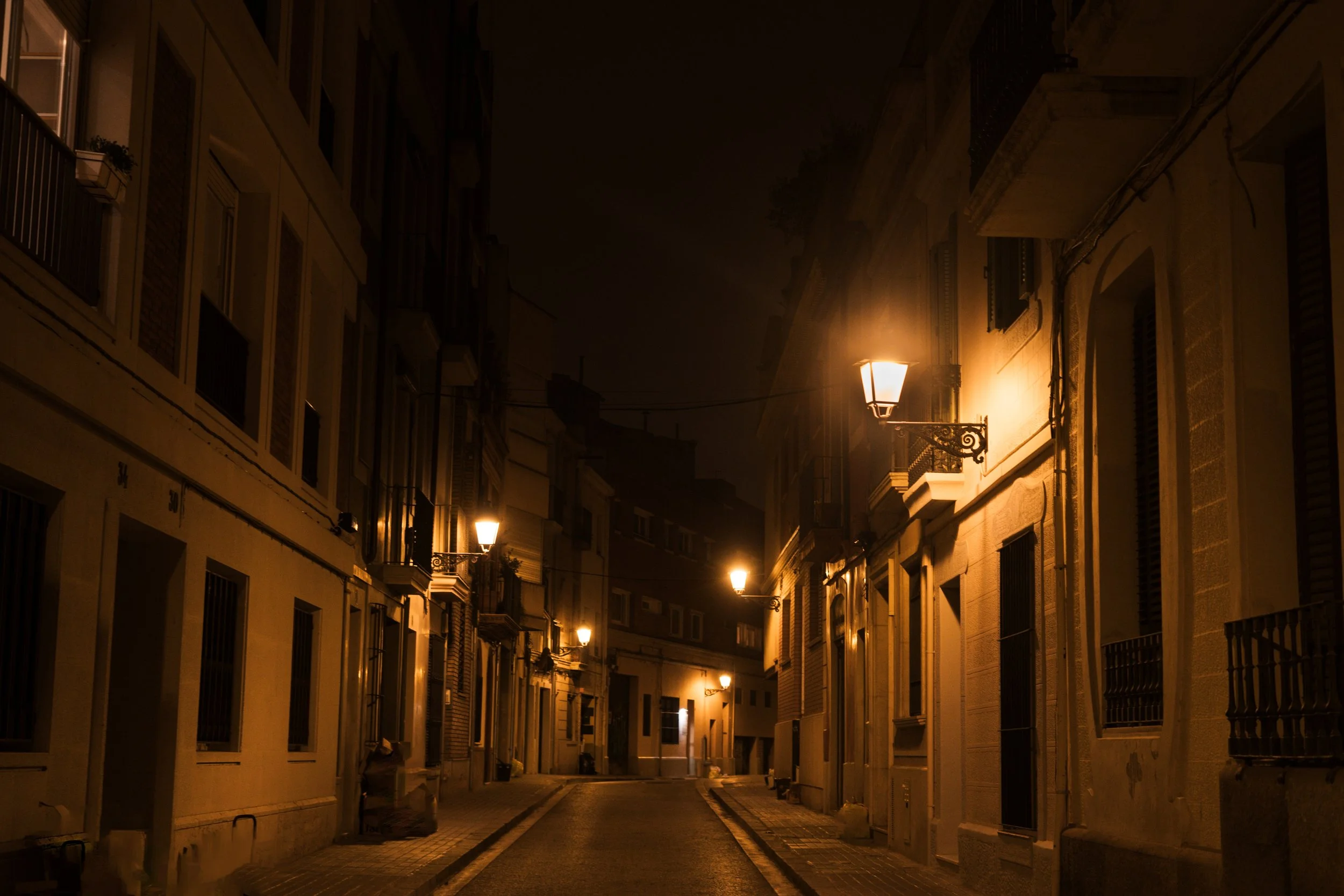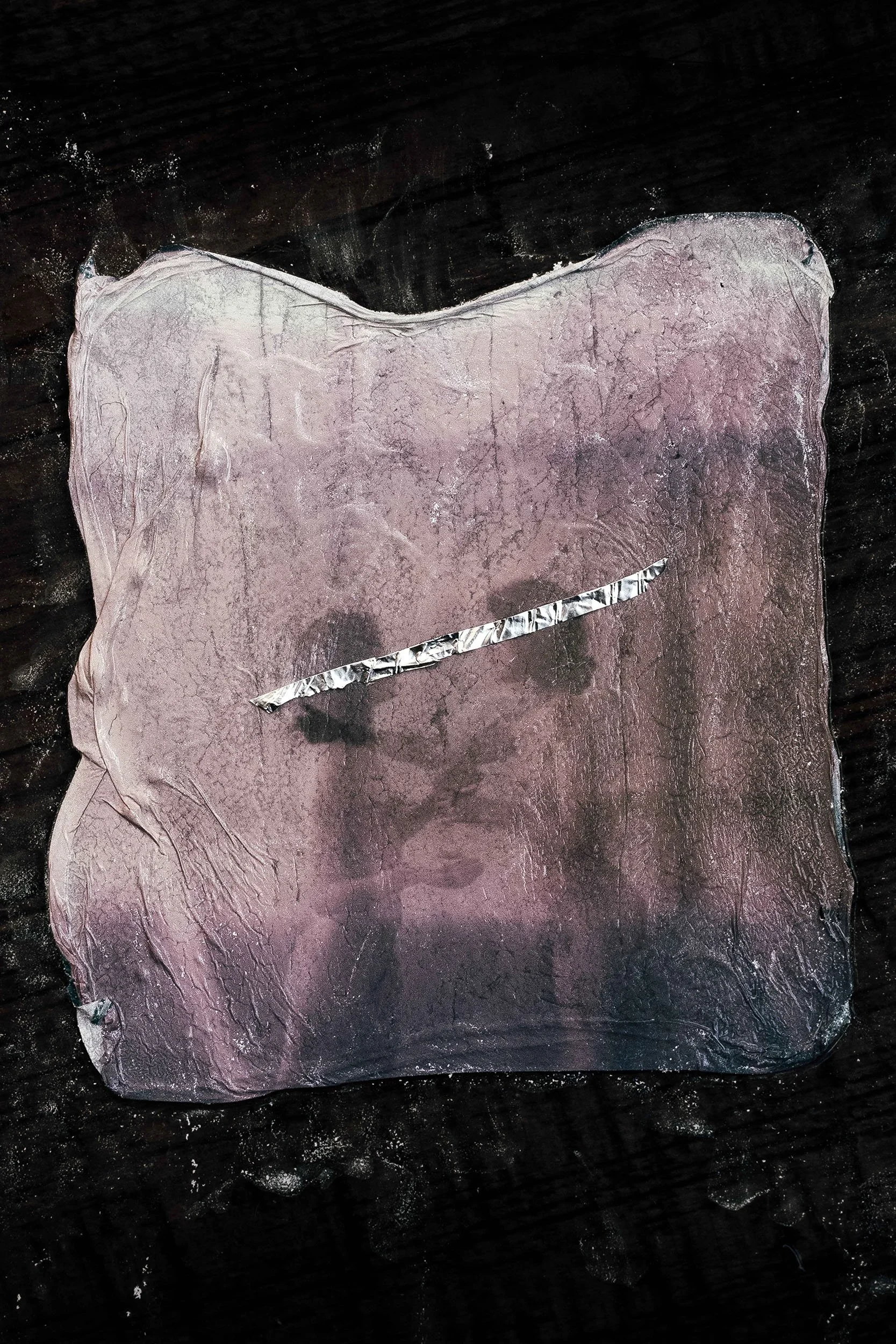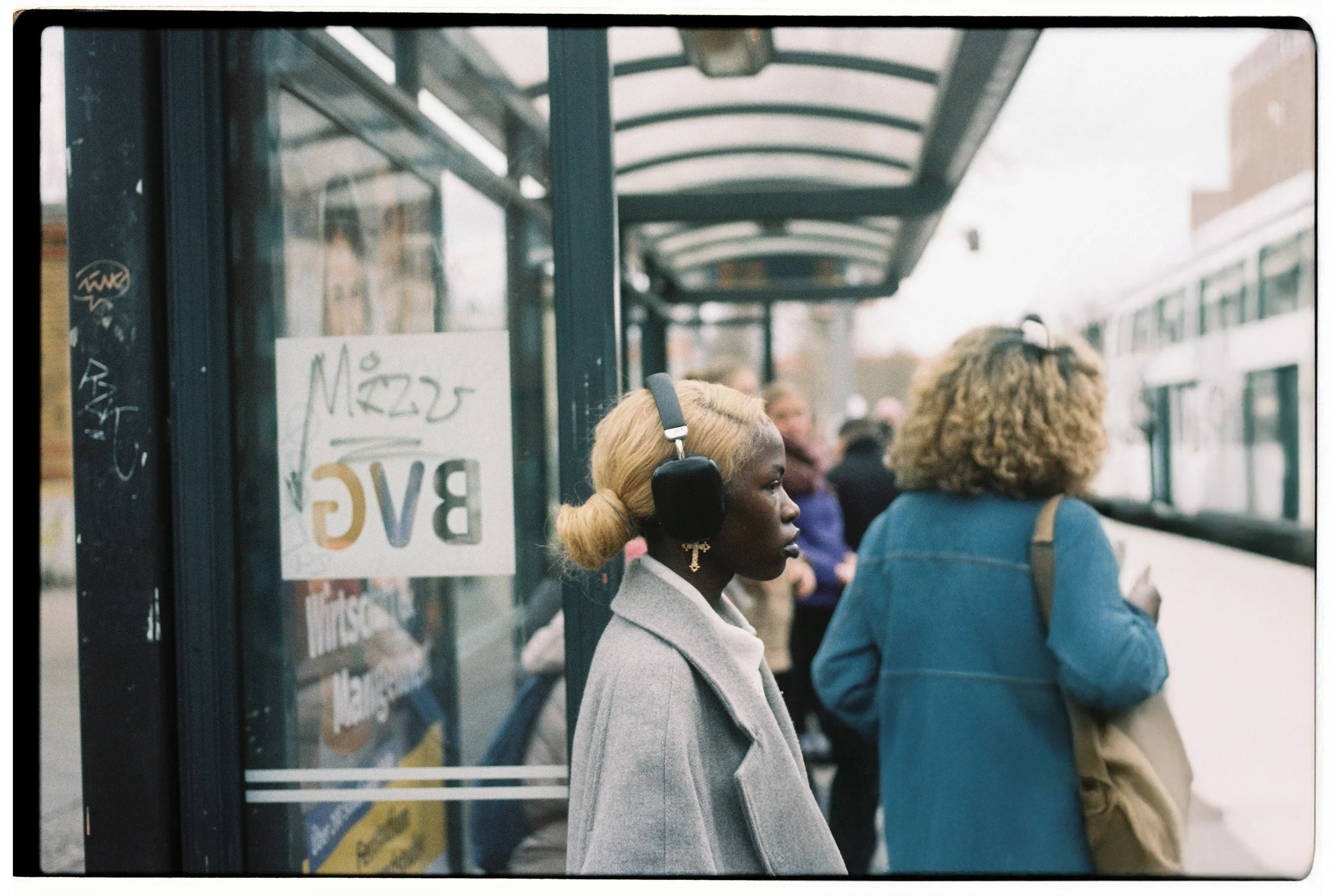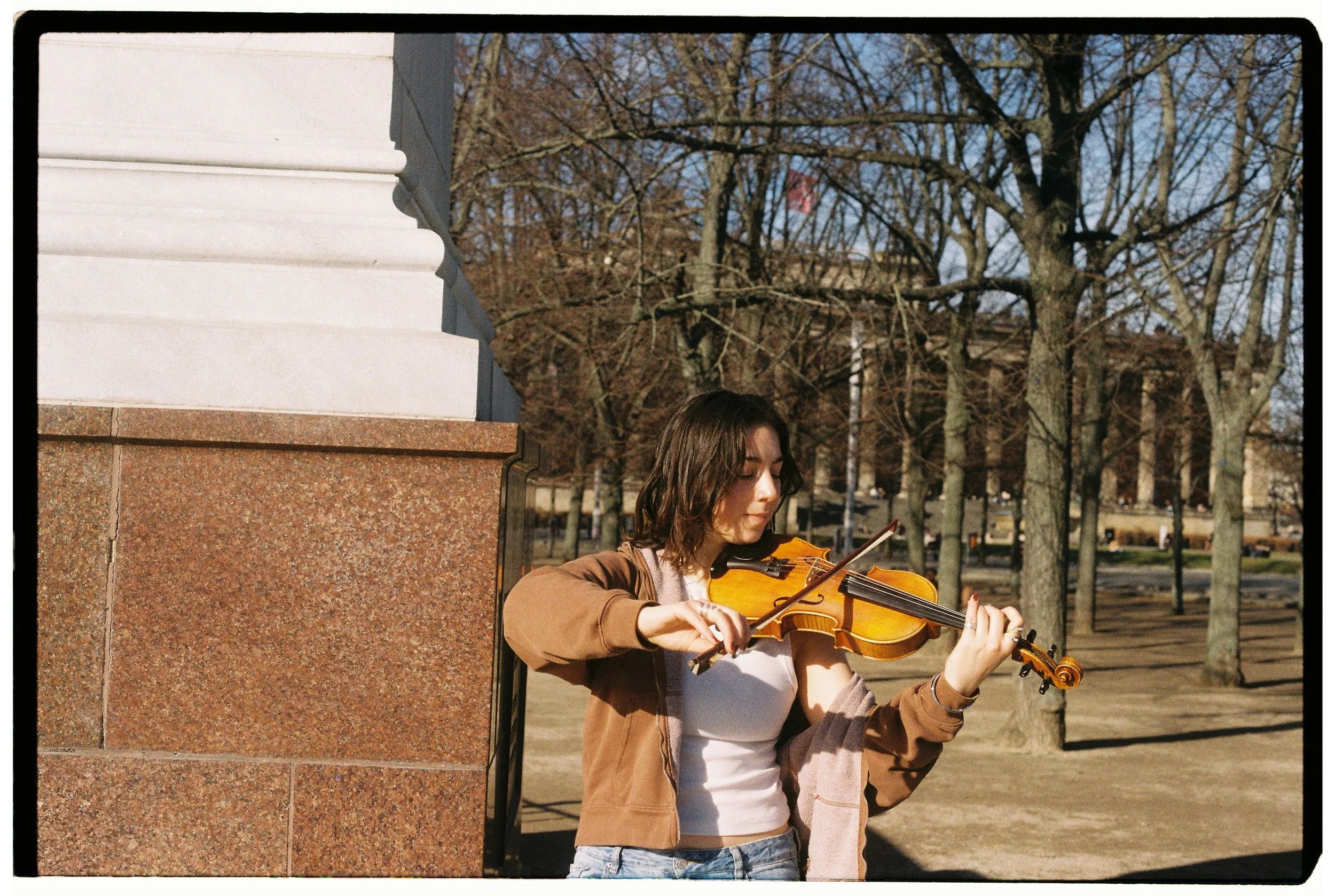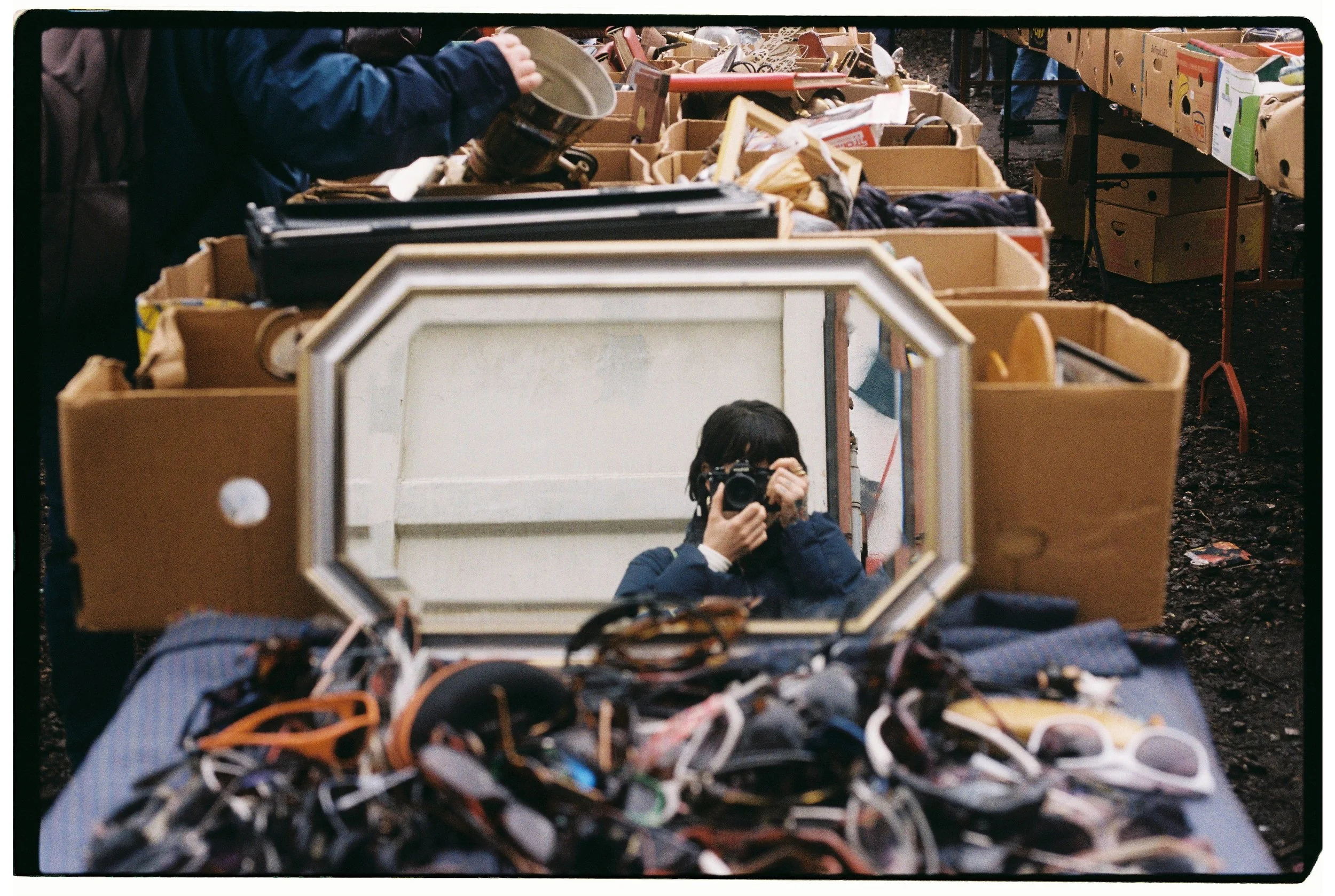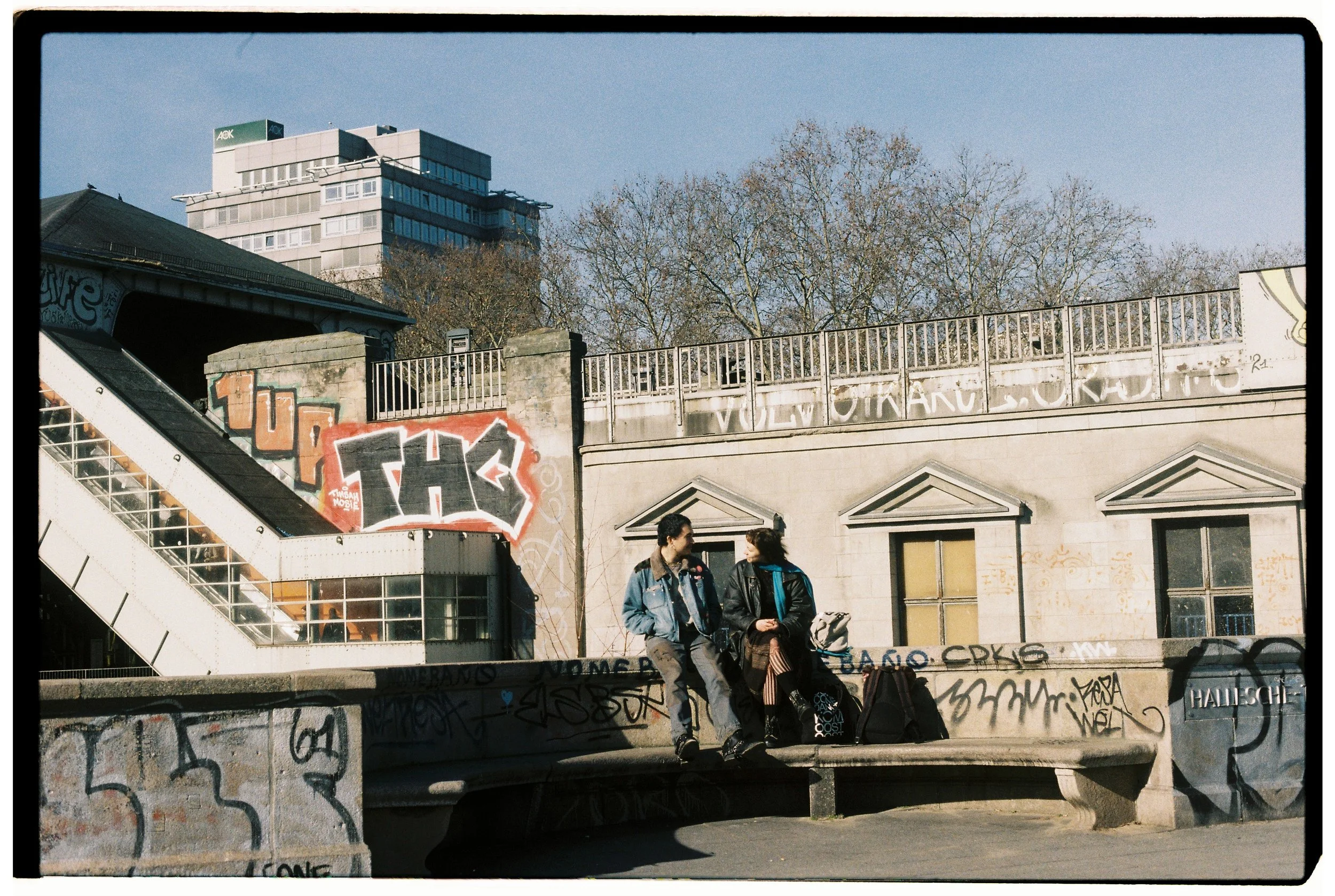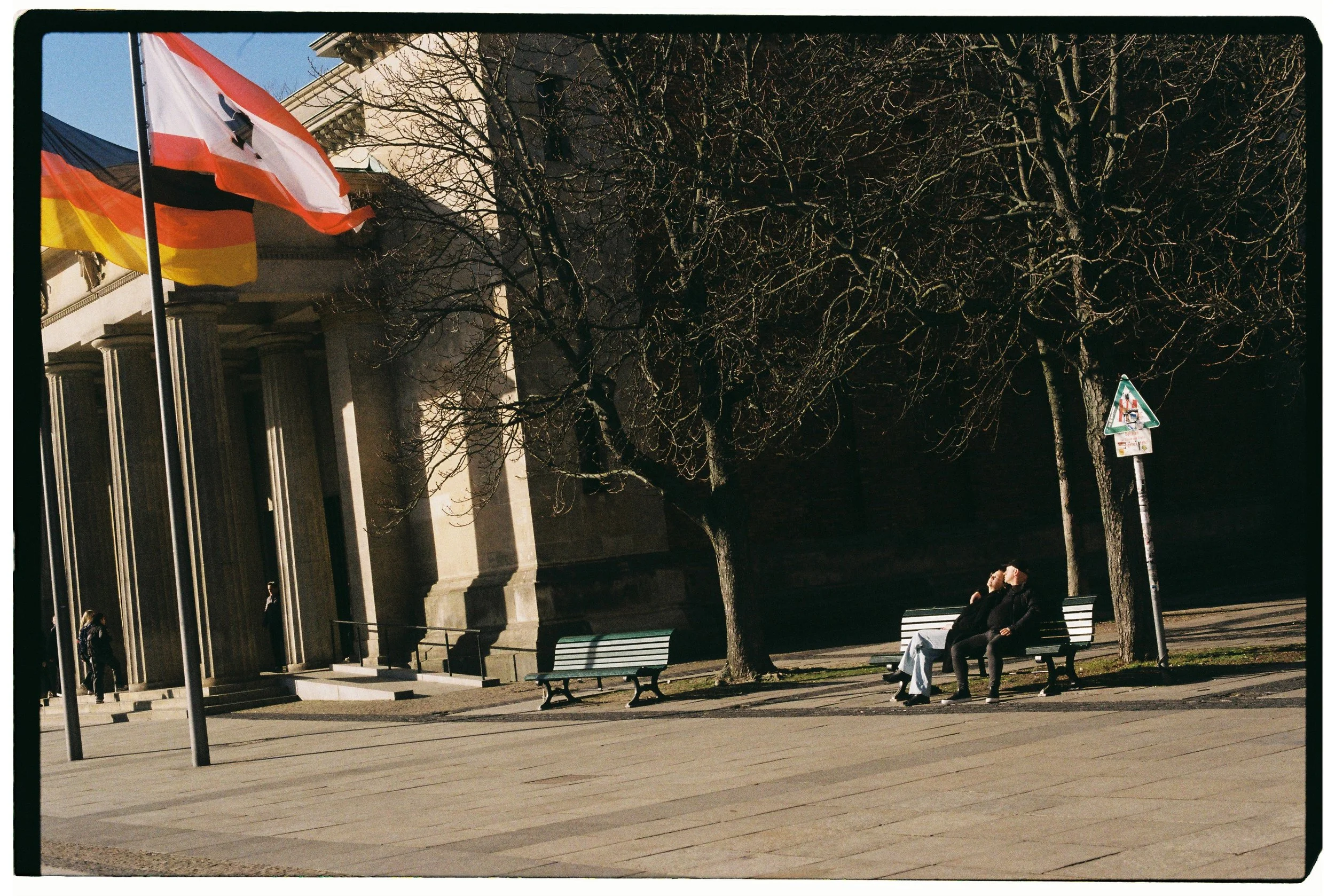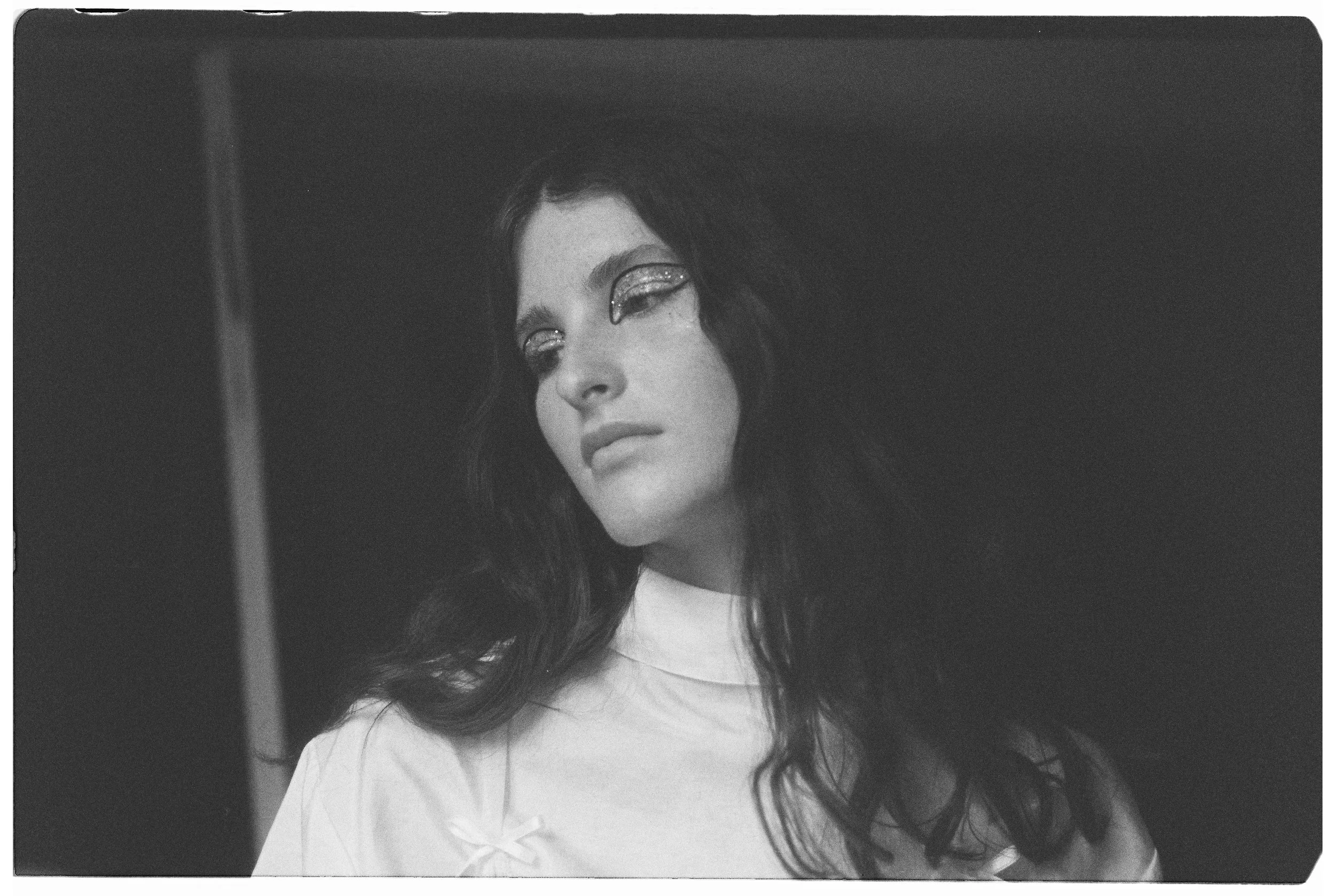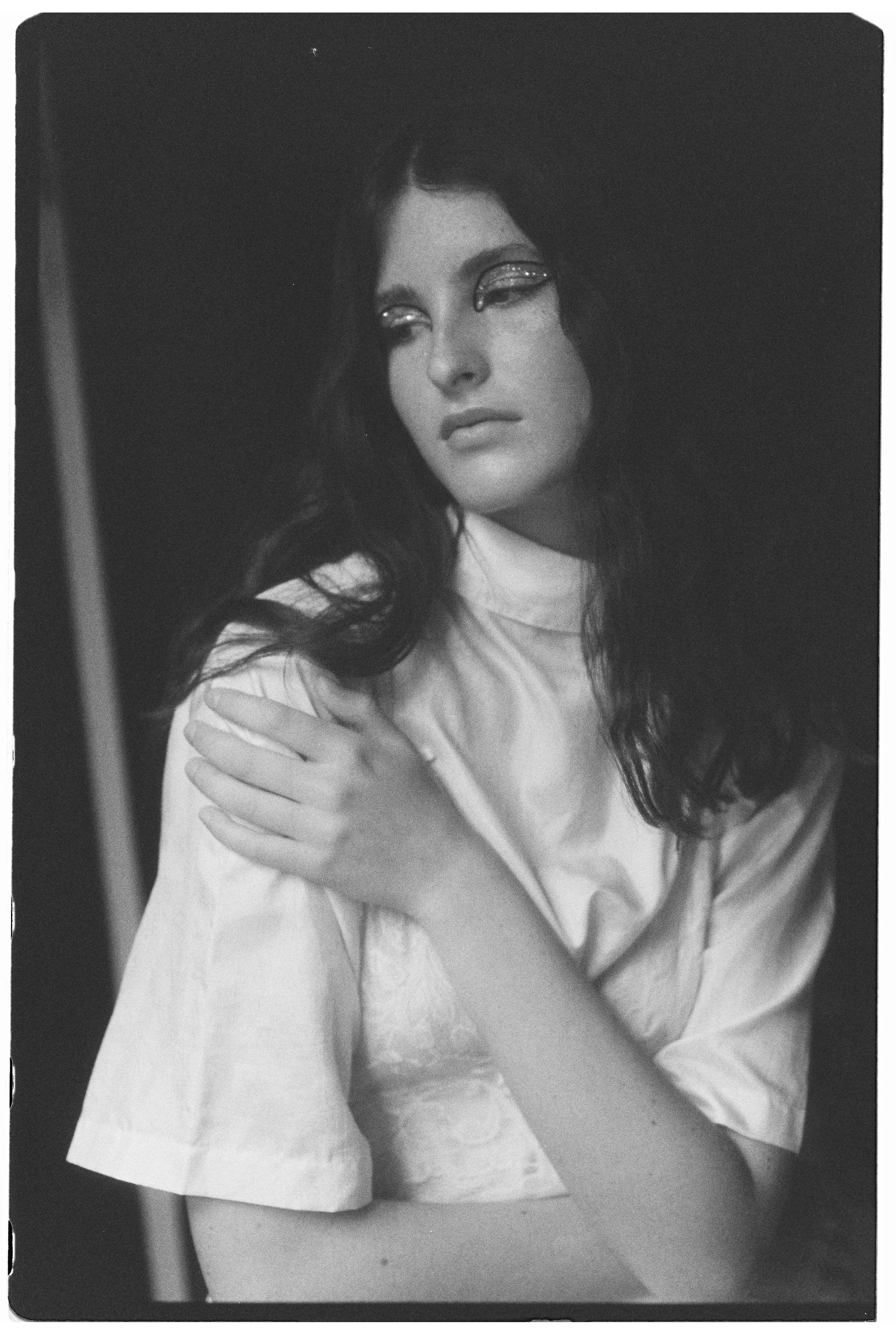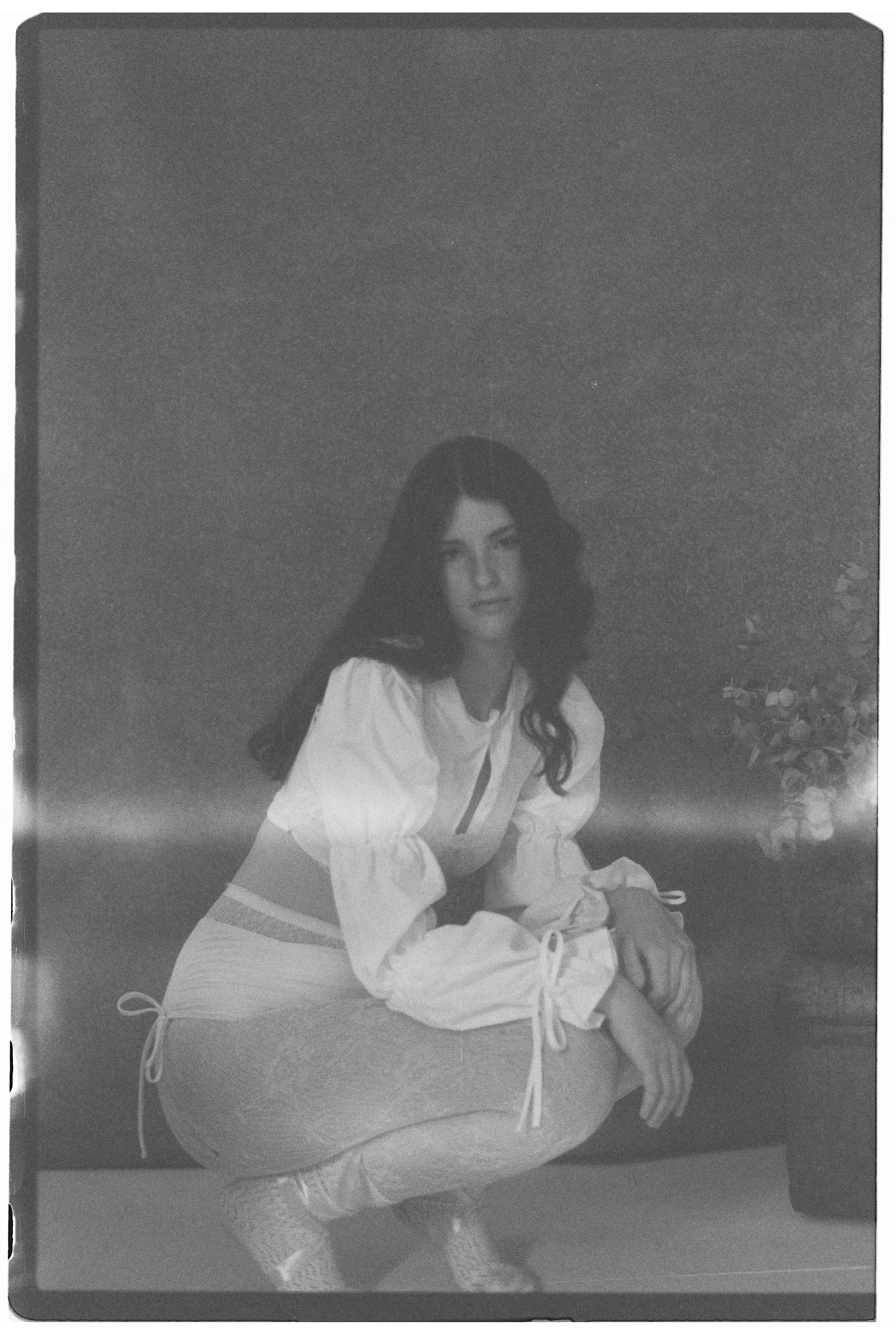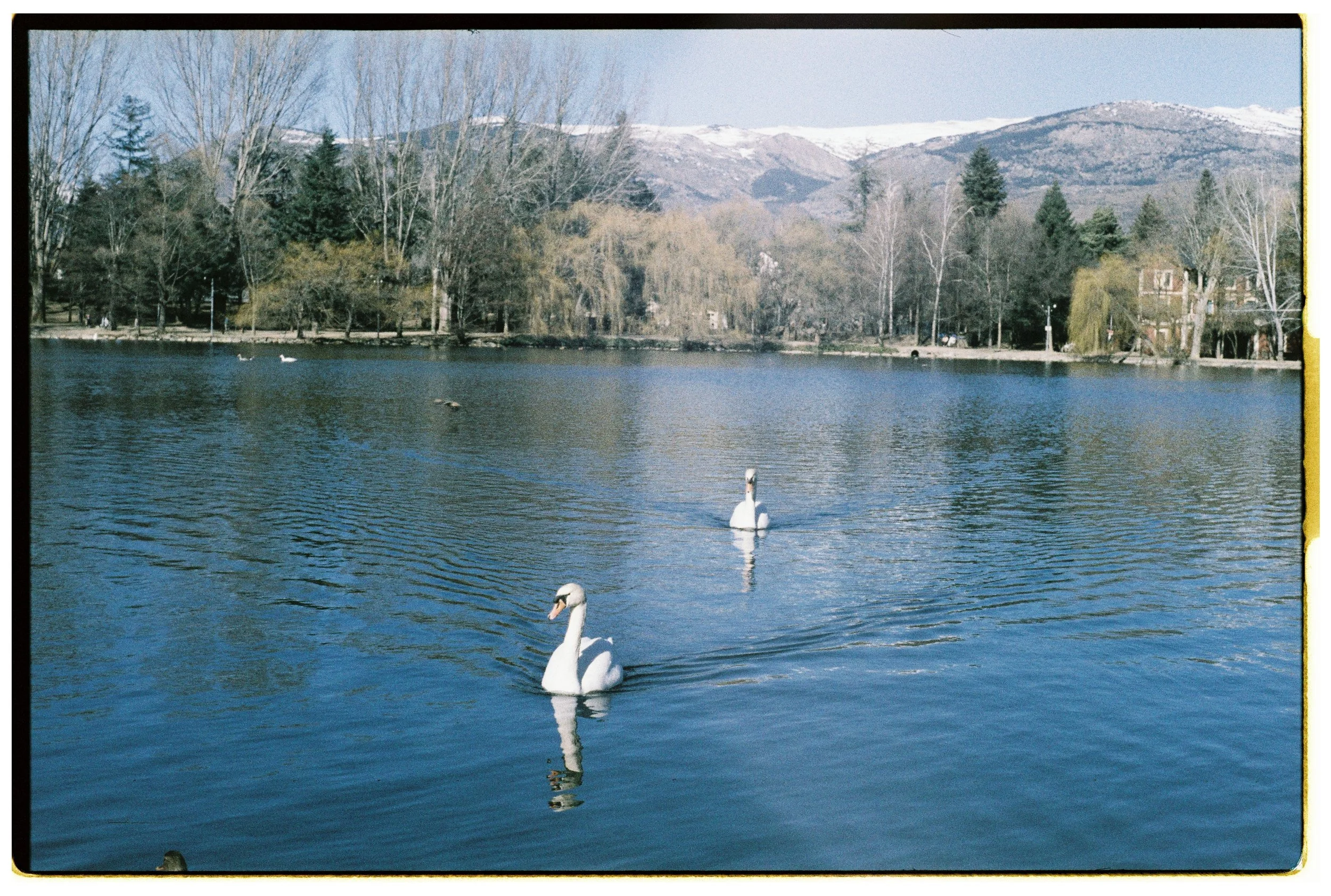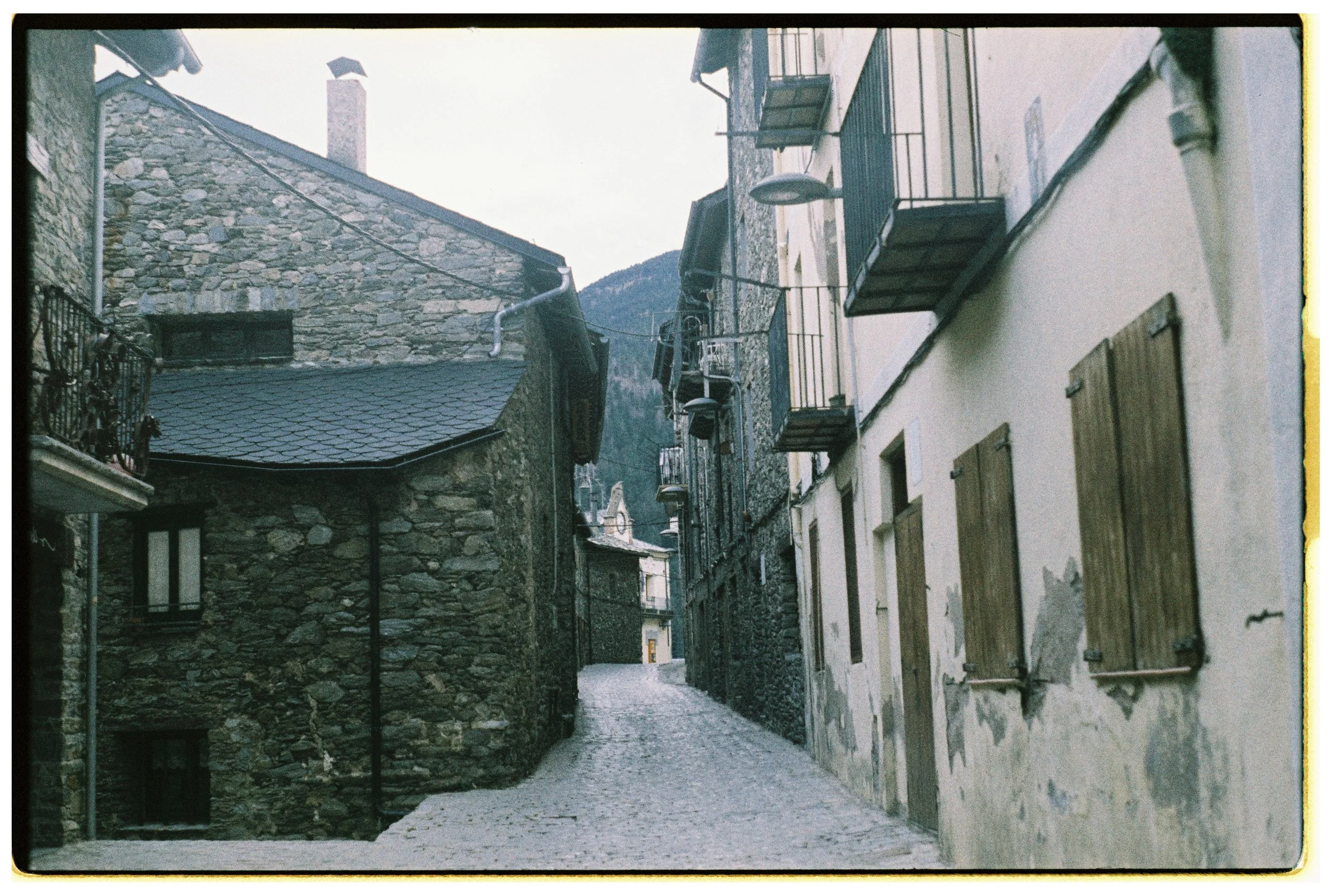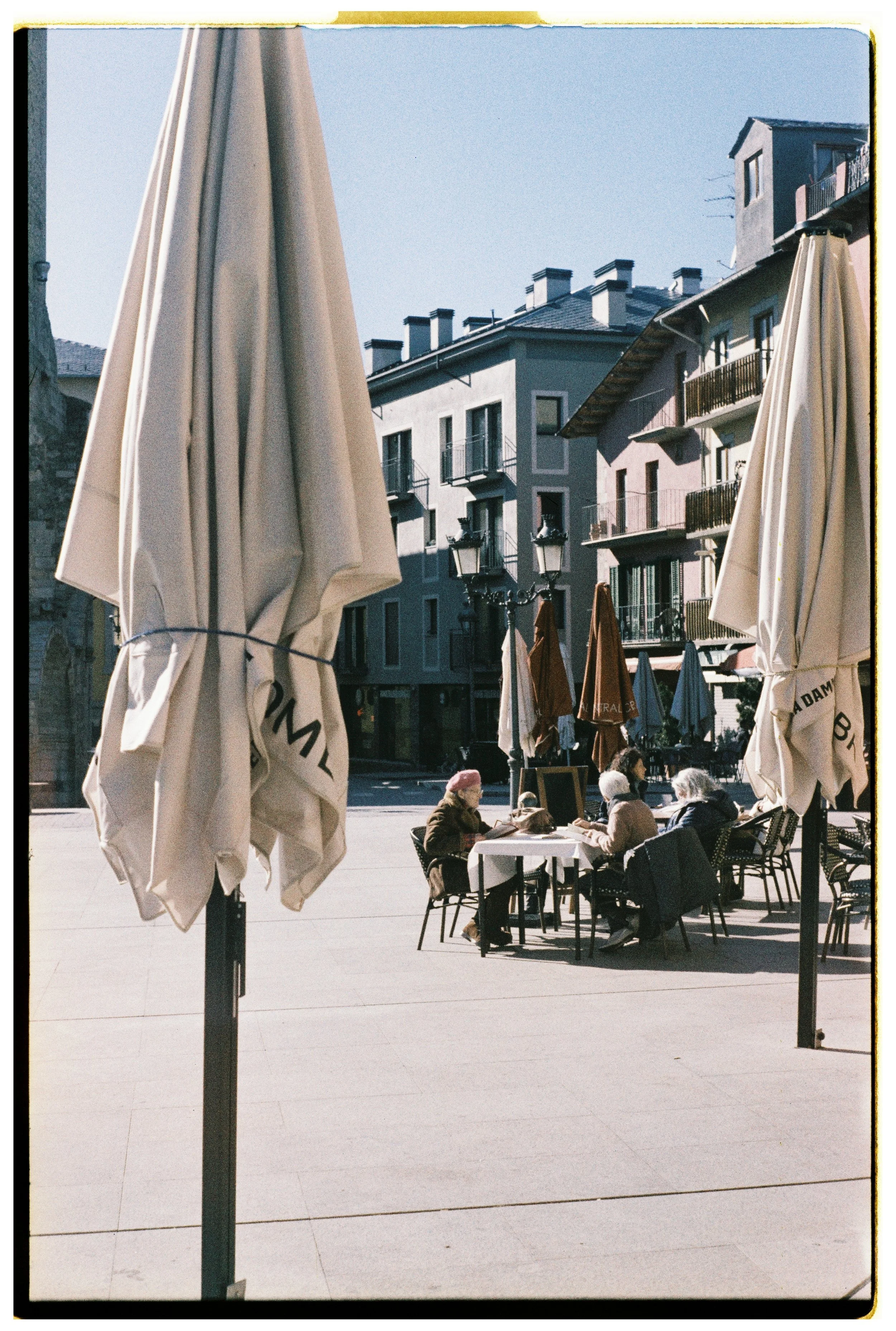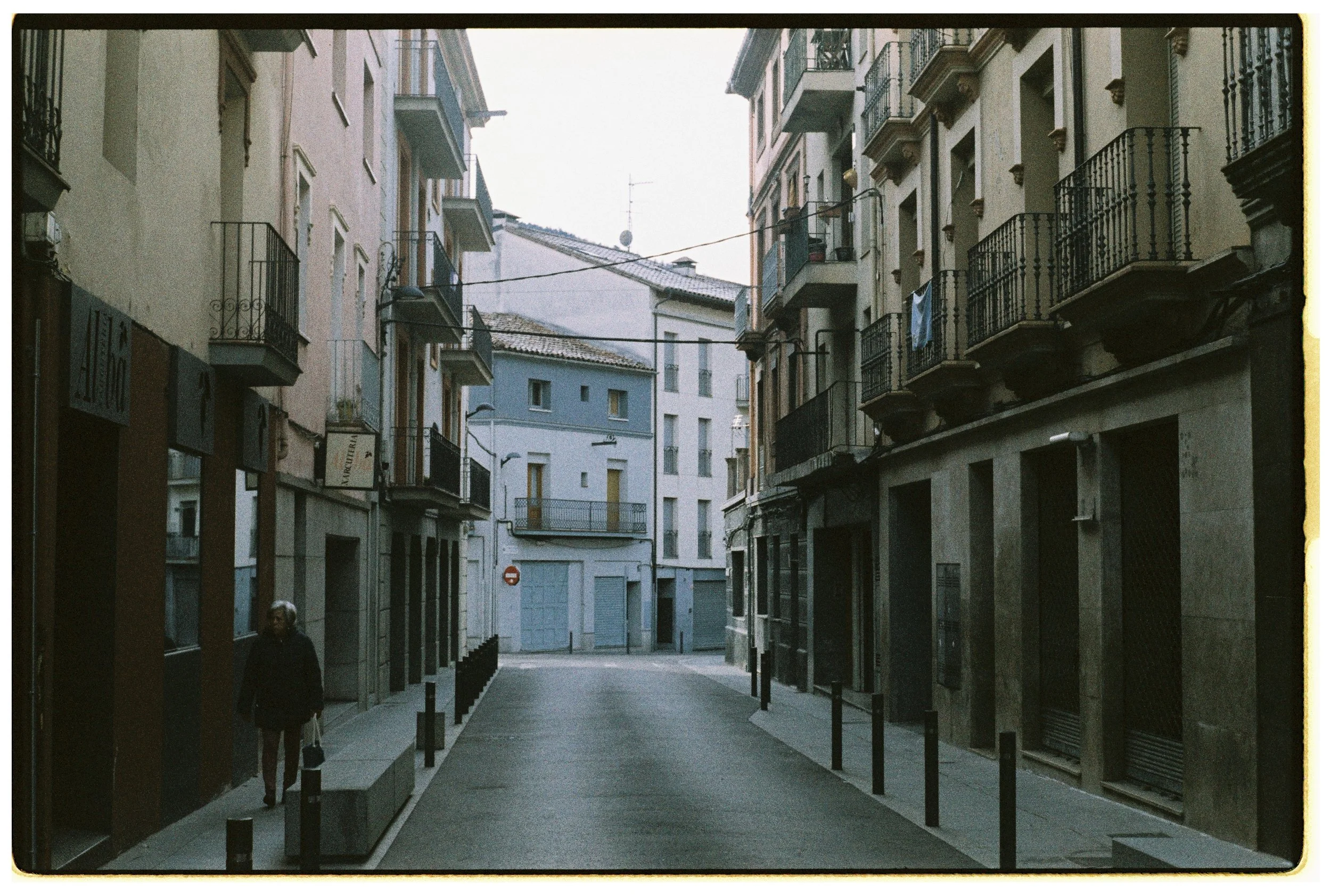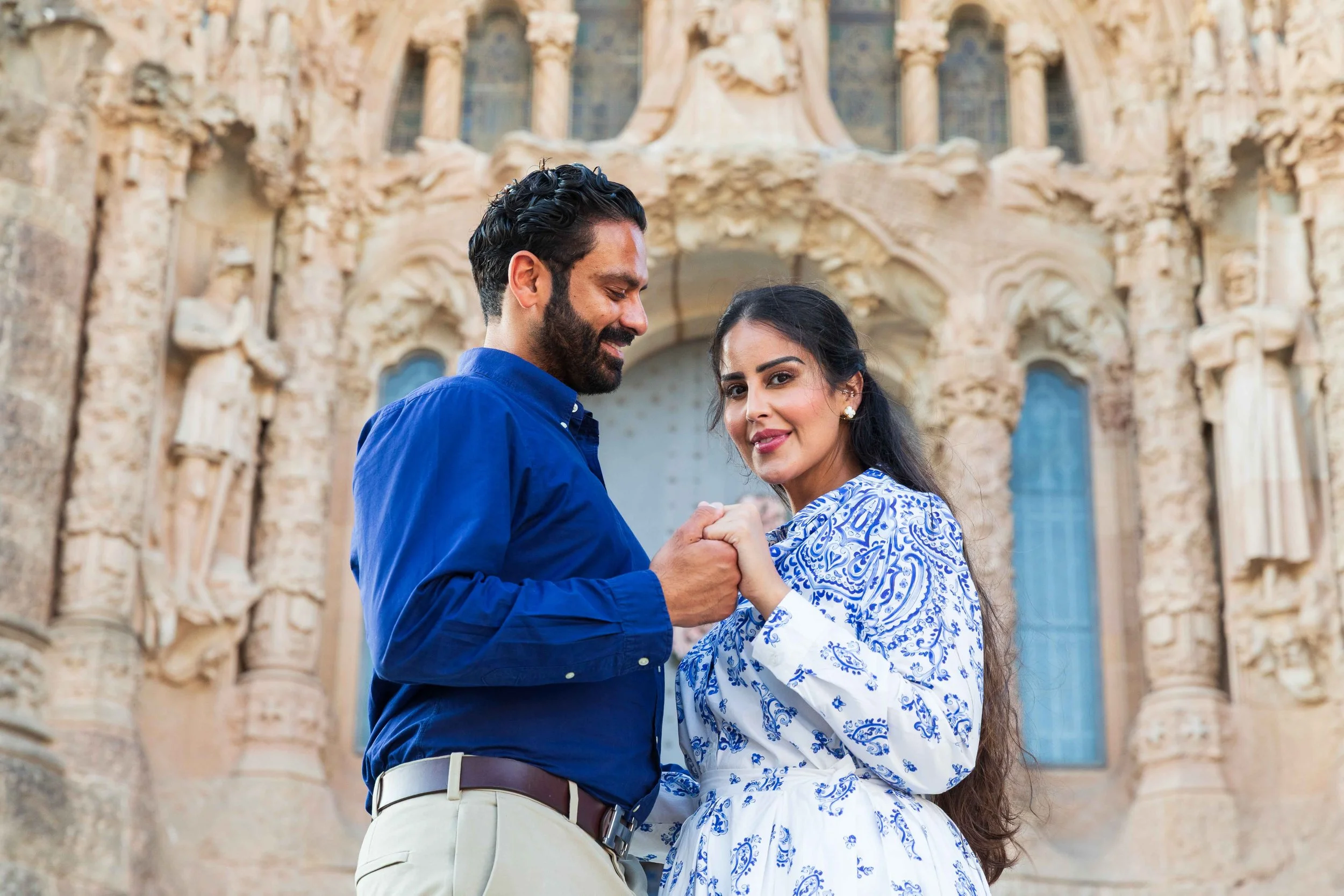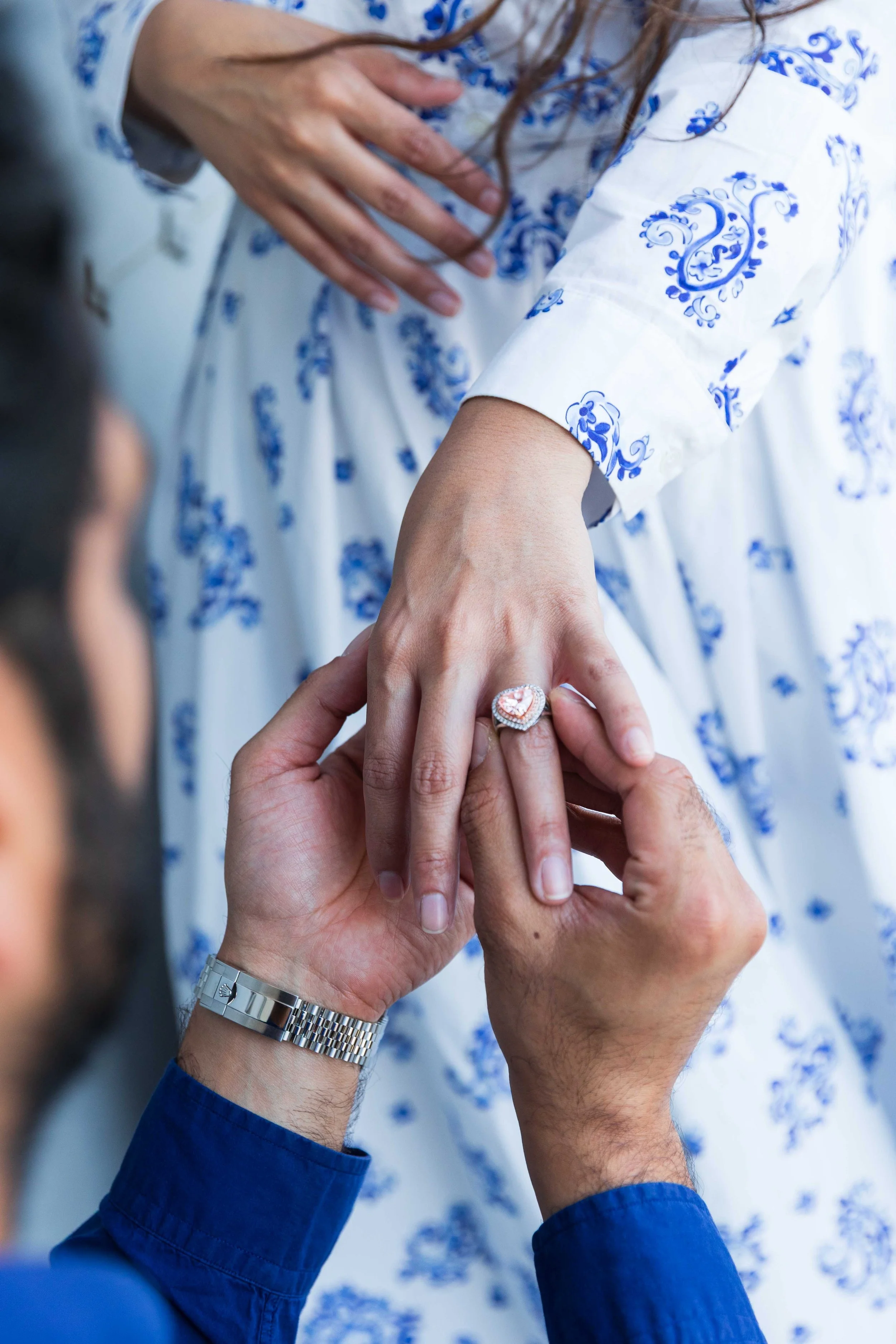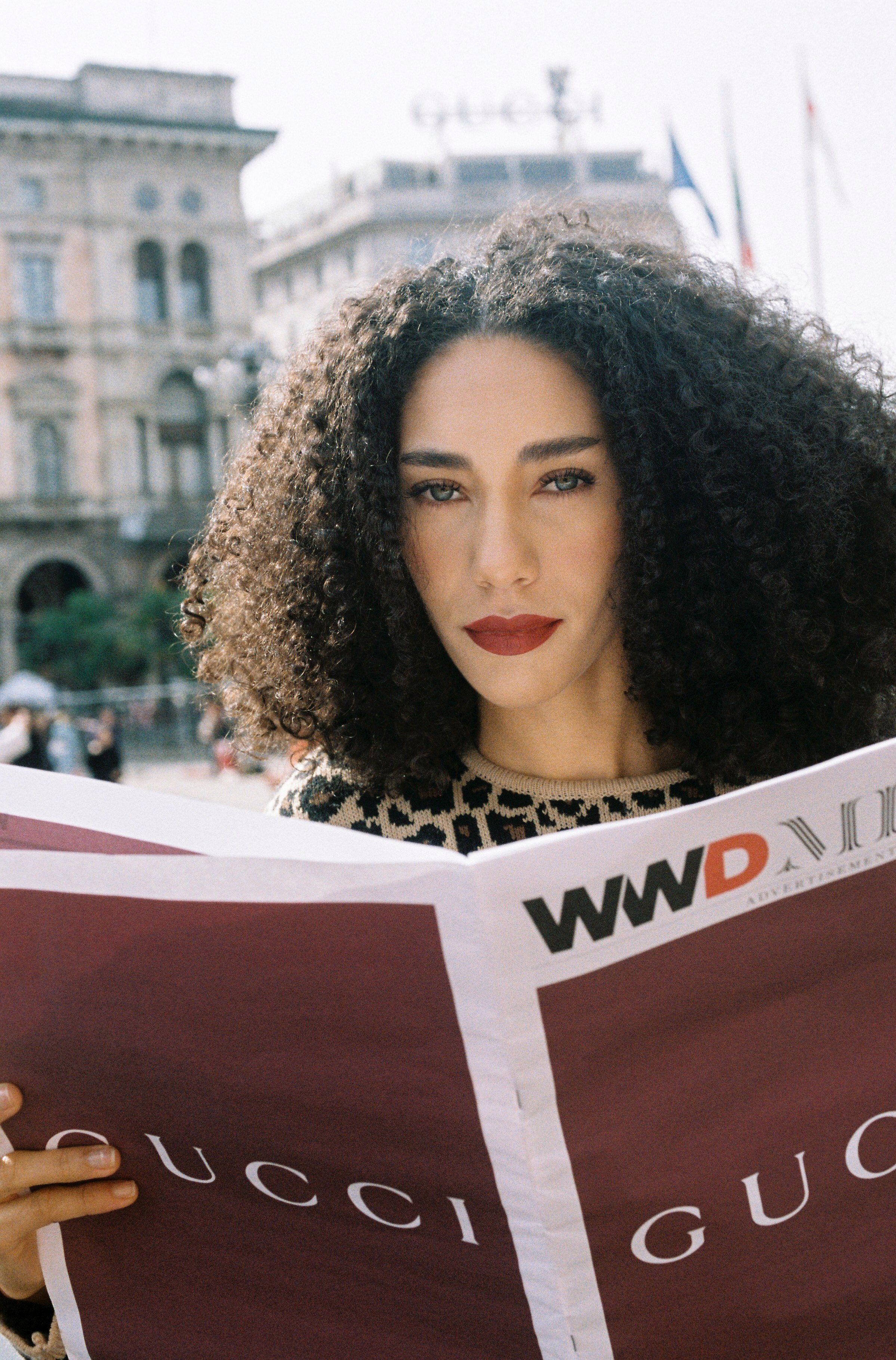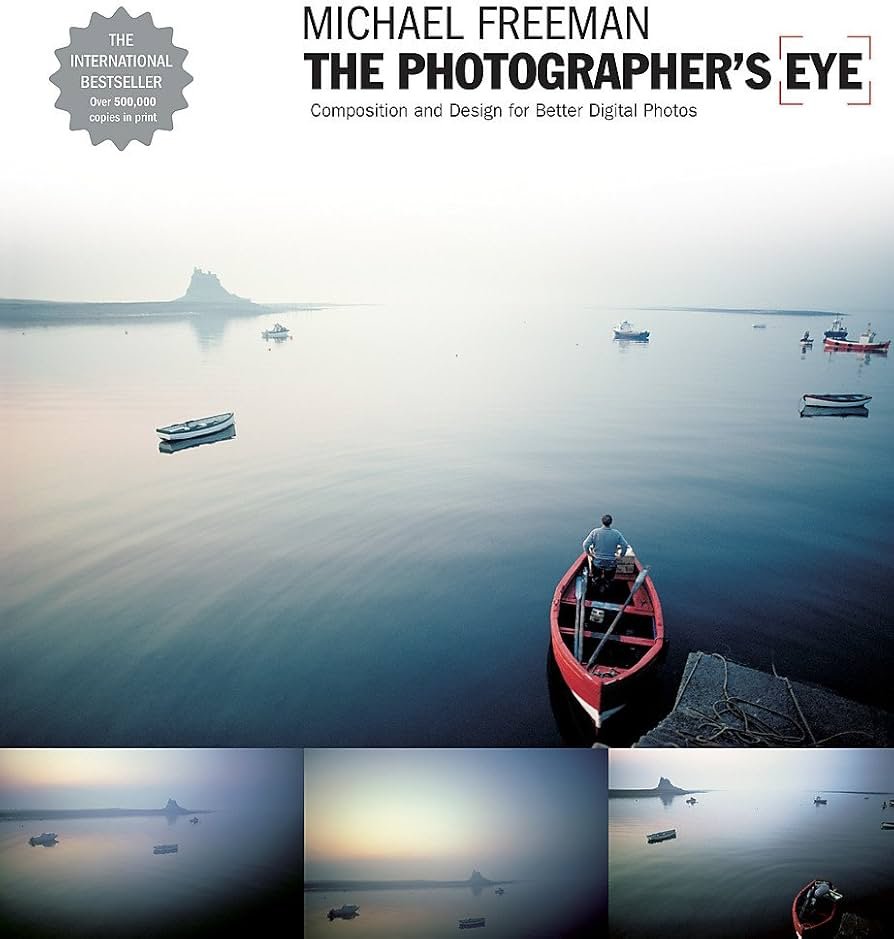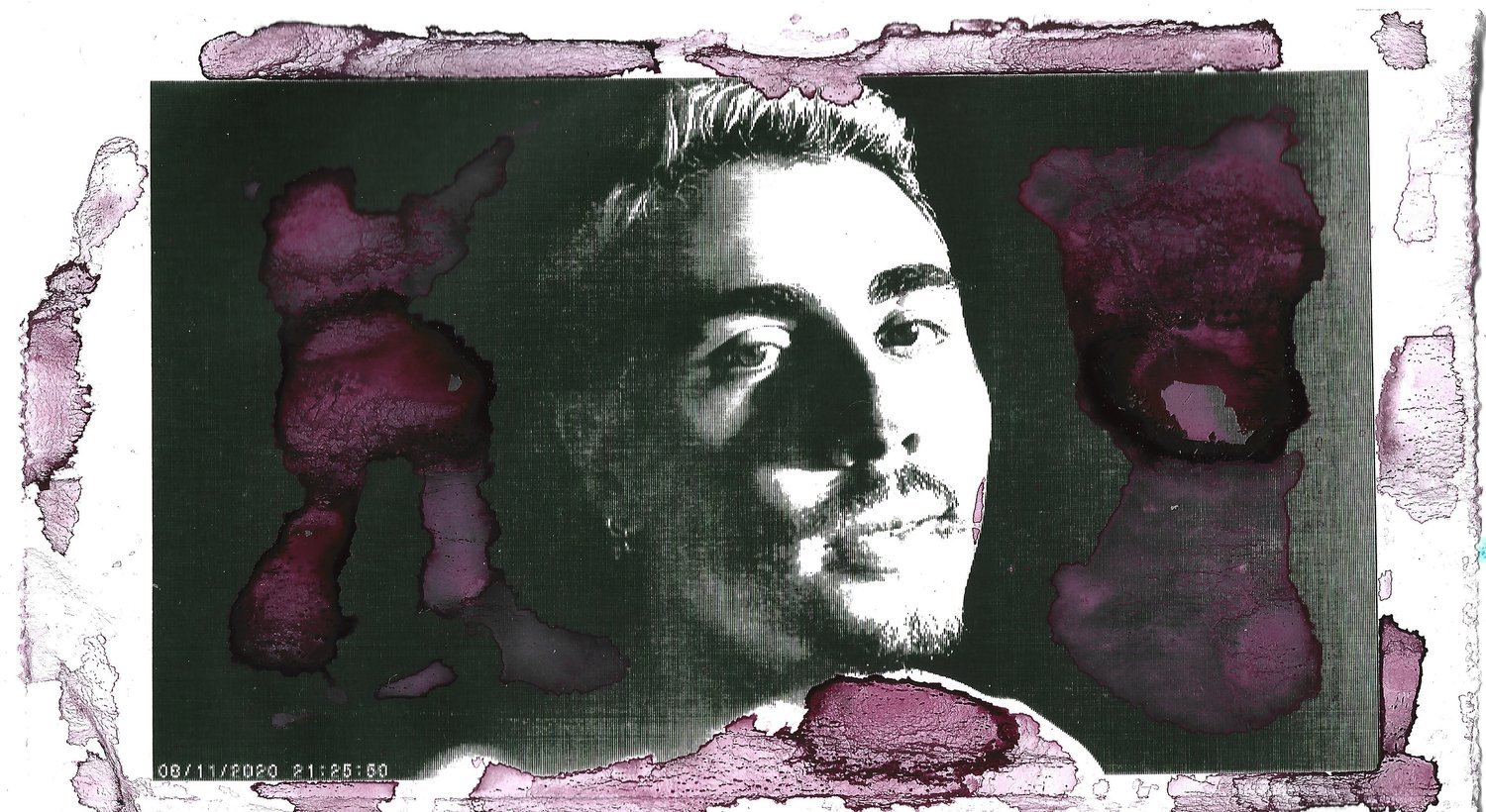A Surprise Proposal in Lloret de Mar: Larissa & Leonardo
Some love stories unfold quietly. Others arrive as a beautiful surprise, even for the person being proposed to.
Larissa and Leonardo are a Brazilian couple, and Leo reached out to me with a very special plan: he wanted to propose to Larissa during a surprise photoshoot. From the very beginning, the intention was clear, the moment needed to feel intimate, emotional, and natural, without breaking the magic of the surprise.
After talking through the idea, I suggested Jardins de Santa Clotilde, in Lloret de Mar. Overlooking the Mediterranean, the gardens offer a timeless atmosphere: stone stairways, sculpted greenery, open sea views, and a quiet elegance that feels both cinematic and intimate. It’s the kind of place where time slows down, perfect for a moment that will be remembered forever.
We planned the session as a simple couple shoot. Larissa arrived thinking it was just a normal photoshoot, while Leo carried the quiet anticipation of what was about to happen. When the proposal came, it was subtle and emotional, no big gestures, just presence, honesty, and love. The kind of moment that doesn’t need direction.
For this session, I photographed everything using a Sony A7III paired with a 50mm lens, allowing me to stay close without intruding. The 50mm gave the images a natural perspective, soft depth, and intimacy, ideal for capturing real expressions, tears, laughter, and the subtle shifts that happen when a life-changing question is asked.
What I love most about surprise proposal sessions is that they’re not about perfection. They’re about truth. About the nervous hands, the pause before the “yes,” and the way two people look at each other when they realize something has just changed forever.
Larissa said yes.
And together, in the gardens by the sea, they began a new chapter, one that now lives on in photographs, memory, and feeling.
Capturing a New Beginning: Shooting with Digital + Film
Last week I had the honor of photographing Jacqueline Rashidi, a talented singer from New York, who is launching new songs and wanted to renew her visual material to match her evolving sound. The session was done partly with my digital full-frame Sony A7III, and partly on film, a Nikon F loaded with Lomography LomoChrome Color ’92 35mm.
There’s something deeply poetic about mixing digital and analog in a project like this, it reflects change, roots, and the passage of time.
🎞️ Why LomoChrome ’92
The LomoChrome ’92 is a color negative film with a rich grain structure, warm tones, and a nostalgic 90s vibe that often surprises and enchants. Depending on light and exposure, it can reveal delicate pastel undertones, soft highlights, even tender skin tones, or deliver deeper, moodier shadows and a retro atmosphere. For Jacqueline, who is transforming her musical identity and visual expression, this film offered the perfect sensibility: a balance between vulnerability and strength, raw emotion and refined tone.
📸 The Session
We spent the morning in a softly lit studio with minimal distractions, a quiet space, simple backdrops with both red and dark colors, natural light flowing through windows. On the digital side, I captured clarity, sharpness and versatility for promotional use: neutral portraits, social-media video teasers, and beauty shots. On film, however, I let things breathe. I asked Jacqueline to move slower, to close her eyes, to feel the moment. The grain, the warm tones, the subtle blur, those frames became more than images; they became memories, whispers, impressions.
One of my favorite frames: Jacqueline looking to the side, light touching her cheek, the background slightly out of focus, the 90s-inspired tones turned into a warm halo, translucent skin tones, golden soft highlights. The digital version is crisp. The analog one, timeless.
In a world saturated by HD perfection, I believe there’s value in imperfection. In shadows that don’t hide, but reveal. In color palettes that tell stories beyond the real. By combining digital precision with analog soul, I aim to give artists like Jacqueline a dual set of visuals: one practical, professional; the other emotional, poetic, human.
This session wasn’t just a photoshoot. It was a reinvention. A new chapter. A visual echo for music that is about to reach new ears.
Thank you, Jacqueline, for trusting me to walk this path with you, with lens, light, and film grain.
Night Wanderings in Barcelona with a Sony
There’s a certain magic that only exists in Barcelona after dark, a softness in the air, a quiet pulse beneath the noise, a kind of cinematic shimmer that asks to be documented. Last night, I gave in to that call.
I left home with my Sony A7III slung across my shoulder and my small, faithful 50mm 1.8 attached, a setup that always reminds me that simplicity can be powerful. That sometimes all you need is one lens, one frame, one moment of honesty.
As I walked through Sarria, the streets hummed with the leftover warmth of the day. Cafés spilled laughter onto the sidewalks, people talked with their hands, I love photographing this neighborhood at night, not because it’s grand, but because it’s human. Every corner has a story. Every light has a temperature. Every passerby is carrying something invisible.
I kept my aperture wide open f/1.8 letting the city blur into dreamy bokeh. Barcelona becomes tender at that depth of field. Streetlights melt into soft orbs. Windows glow like little universes. The city stops demanding to be documented sharply and instead invites you to feel.
Photography at night is slower. It asks for presence. It reminds you to breathe. It feels like listening.
Sometimes, especially after years of moving cities, from Recife, to São Paulo, to Barcelona, the camera becomes a way to anchor myself again. To say: I am here. I am witnessing. I am part of this place.
And Barcelona… she always gives you poetry.
it contains affiliate links and it helps me with my photography journey!
On Self-Portraiture and the Soft Work of Knowing Ourselves
I’ve always believed that the camera is a curious kind of mirror, it reflects, but it also asks questions. Over the years, I’ve come to see self-portraiture not as vanity or self-display, but as a vital practice of self-discovery. The slow, intentional act of photographing myself has been a way to listen, to understand, and to reconnect with who I am beneath the noise.
I’ve always believed that the camera is a curious kind of mirror, it reflects, but it also asks questions. Over the years, I’ve come to see self-portraiture not as vanity or self-display, but as a vital practice of self-discovery. The slow, intentional act of photographing myself has been a way to listen, to understand, and to reconnect with who I am beneath the noise.
My series “Cloud Head” was born during a period when the world had quieted down and I was left with the only company I could truly rely on, my own interior. That stillness revealed so much: old wounds, unspoken fears, the hidden rhythms of my mind. Through daily Polaroids, I began to explore those states of being, not to document perfection, but to embrace imperfection. Using emulsion lifts and hybrid analog techniques, I physically altered each image, tearing, layering, submerging, as a metaphor for deconstruction and healing. I was, quite literally, rebuilding myself image by image.
Self-portraiture, for me, is a way of reclaiming agency. For so long, women have been seen through other people’s eyes, directed, posed, and defined by external gazes. When I turn the camera on myself, I take back that narrative. I decide what stays in the frame, how the light touches me, and which version of myself I want to meet that day. It’s not about control, but about honesty. Some days, the image is soft and grounded. Other days, it’s fractured, blurred, uncertain, and that’s also me.
There’s something deeply therapeutic in letting accidents and imperfections become part of the process. The mistakes in the darkroom, the chemical stains, the uneven edges, they all tell the truth of being human. Through “Cloud Head”, I learned to accept incompleteness as a form of beauty. That acceptance is at the heart of my practice: the permission to be in process, to not know, to evolve.
When Cloud Head was exhibited at festivals like the Rotlicht Festival in Vienna and the Experimental Photo Festival in Barcelona, I realized how personal stories can become shared languages. Viewers saw parts of themselves in my fragments. What began as private healing became a collective reflection, proof that vulnerability connects us more deeply than perfection ever could.
Today, I see self-portraiture as a conversation between who I am and who I’m becoming. It’s a practice that any woman can embrace, not to perform for others, but to meet herself, frame by frame. Whether with a Polaroid, a phone, or a handmade print, every image is a moment of truth, a dialogue with the self that says: I see you.
And if you’d like to explore this process more deeply, I’ve gathered my reflections and exercises in my e-book, Reflections, a gentle guide to using photography as a tool for self-knowledge and creative healing. Inside, I share the methods that shaped my own journey: exercises that blend journaling, analog experimentation, and mindful observation.
👉 Get your copy on Gumroad: brunavalenca.gumroad.com/l/reflections
Turn the lens inward. Begin to see yourself, truly see yourself, and watch what unfolds.
Reflections: A Journey of Self-Discovery Through Photography
Have you ever looked at a photograph and felt it could tell a story about your inner world? Photography isn’t just about capturing moments, it’s about connecting with yourself and expressing your identity. That’s the essence behind my new eBook, Reflections, a guide to self-discovery through self-portraiture.
What is Reflections?
Reflections is a visual and poetic exploration of how self-portrait photography can be a transformative tool. It’s designed for women, artists, and anyone seeking to understand and express themselves more deeply. The eBook combines creative exercises, practical techniques, and reflections inspired by feminist art and personal storytelling.
What You’ll Find Inside
Here’s what makes Reflections unique:
Creative Exercises: Thoughtful prompts to help you explore your inner world through the camera.
Analog and Digital Techniques: Learn processes like Polaroid Emulsion Lift and other creative approaches.
The Female Gaze: Insights on reclaiming your image and presence in a world shaped by external expectations.
Artistic Inspirations: Discover influences from iconic artists like Frida Kahlo, Cindy Sherman, and Claude Cahun.
No professional equipment is required, all you need is curiosity and openness.
Why Self-Portraiture Matters
Self-portrait photography is more than a visual art form; it’s a practice of empowerment and self-awareness. By exploring how you see yourself, you can uncover emotions, stories, and strengths that might otherwise remain hidden. Reflections guides you on this journey with both practical tools and reflective insights.
Get Your Copy
If you’re ready to embark on a journey of self-discovery and creative expression, Reflections is waiting for you.
Let this be your invitation to see yourself through a new lens, literally and figuratively, and to celebrate the power of self-expression.
Roots: Discovering Ancestry Through Cyanotype on Fabric
My First Experience with Cyanotype
For this project, I used the Jacquard Cyanotype Kit for Fabric, which comes with pre-treated sheets designed for textile printing.
During the pandemic, I found myself reflecting deeply on family, memory, and heritage. One project that emerged from this introspection is Roots, a series exploring my Jewish ancestry, something often mentioned in my family but never fully explored. I decided to visualize this journey through cyanotype on fabric, a medium that felt tactile, archival, and poetic.
How Cyanotype on Fabric Works
Cyanotype on fabric is a simple yet magical process. The fabric is pre-treated with light-sensitive chemicals (ferric ammonium citrate and potassium ferricyanide in the Jacquard kit), which remain inactive until exposed to UV light. I placed negatives, stencils, or other objects directly onto the fabric and let them sit under sunlight for several minutes. The areas exposed to light turn a greenish color initially, which then develops into the signature Prussian blue when rinsed with water. The process is highly tactile — the way the fabric absorbs the chemicals, how the light falls, and even slight movements create unique variations in tone and texture, making every print one-of-a-kind.
My First Experience with Cyanotype
For this project, I used the Jacquard Cyanotype Kit for Fabric, which comes with pre-treated sheets designed for textile printing. It was my first time working with cyanotype, and the experience was both meditative and experimental. The process of laying out negatives, exposing fabric to sunlight, and watching the blue tones emerge felt almost like watching memory itself take shape.
Unlike photography on paper or digital images, cyanotype on fabric adds depth and texture, making each print feel alive. The indigo hues evoke a sense of history, echoing the passage of time, while the imperfections and variations in exposure bring intimacy and authenticity to each piece.
Integrating My Family Tree
Central to Roots was a genealogical map I created to trace my ancestry. I translated elements of the family tree into cyanotype imagery, layering names, symbols, and patterns across the fabric. Each exposure became a meditation on lineage, identity, and the stories passed down through generations.
Working with cyanotype also allowed me to experiment with scale and repetition, printing branches of the family tree multiple times, overlaying textures, and letting the light and chemicals interact unpredictably. This unpredictability mirrored the way history and memory often reveal themselves: partially hidden, fragmented, and waiting to be uncovered.
Reflections on the Medium
Cyanotype offered a unique emotional resonance. Unlike photography on paper or digital formats, it feels intimate, handmade, and material. The blue tones carry both melancholy and beauty, emphasizing the connection between past and present.
Through Roots, cyanotype became more than a technique, it became a tool for exploration, a way to connect with ancestral memory, and a method to make visible what was previously intangible.
Buy your Jacquard Cyanotype on fabric kit here and help me with my photography journey! :)
Berlin on Film: Shooting the City with 35mm
Berlin moves fast, but film gave me a way to slow it down. Shooting 35mm on LomoChrome ’92 Sun-Kissed turned my trip into something timeless.
Berlin has always fascinated me. A city layered with history, contradictions, and energy that seems to reinvent itself daily. For this trip, I decided to leave digital behind and let myself see the city through film. I packed my Nikon F with a roll of Lomography’s LomoChrome Color ’92 Sun-Kissed ISO 400 and trusted that the unpredictable nature of analog would shape the way I experienced Berlin.
Falling in Love with LomoChrome Color ’92
The LomoChrome Color ’92 Sun-Kissed is a relatively new gem in the film world. Lomography released it in 2023, inspired by the warmth and nostalgia of the early 1990s. What makes it special is how it embraces imperfections, subtle color shifts, amber highlights, and a grain structure that feels organic and cinematic.
Unlike standard color films, it has a very experimental character. It can surprise you with unexpected tones: sometimes giving a reddish cast in strong sunlight, other times bringing out teal shadows that make ordinary scenes feel cinematic. That unpredictability is exactly what excites me as a photographer, it’s almost like the film itself becomes a collaborator, adding its own interpretation of the moment.
As I wandered Berlin’s streets, I felt the city transform through the lens. Brutalist buildings glowed golden, graffitied alleys seemed warmer, and even the grey corners of the city carried a quiet softness.
The grain was just right: organic, textured, and beautifully imperfect. It’s what I love most about shooting film, the way each frame carries life, unpredictability, and emotion. Shooting with the Nikon F slowed me down, made me more attentive. Each click of the shutter felt like a small act of presence, a decision to hold onto a fleeting moment.
Why I Choose Film
There’s something magical about film that no digital process can imitate. Shooting with the Nikon F and a roll of LomoChrome ’92 slowed me down, made me present. Each shot was intentional, a commitment. I wasn’t rushing to check screens or reshoot angles; I trusted the film to carry the weight of the story.
What I love most about this particular stock is that it doesn’t chase perfection, instead, it celebrates mood. The grain, the warm hues, the delicate shifts in light all gave Berlin a timeless quality. Looking at the developed images now, I see more than just photographs. I see how Berlin made me feel: alive, curious, nostalgic.
Looking at the developed images now, I see more than just photographs. I see how Berlin made me feel: alive, curious, nostalgic. The LomoChrome Color ’92 Sun-Kissed gave me not just pictures, but memories infused with warmth and texture that no digital file could ever replicate.
Berlin moves fast, but film gave me a way to slow it down. Shooting 35mm on LomoChrome ’92 Sun-Kissed turned my trip into something timeless. Each frame feels like a love letter, to the city, to film, and to the act of seeing.
Buy Lomochrome here :) - it contains affiliate link and it helps with my photography journey!
Between Film and Digital: Which one wins?
There’s a certain kind of magic that happens when two different mediums meet in the same creative space. For this editorial, shot at Modulab studio in Barcelona, I challenged myself to photograph the entire session both in analog and digital, allowing the textures of each approach to live side by side.
There’s a certain kind of magic that happens when two different mediums meet in the same creative space. For this editorial, shot at Modulab studio in Sant Andreu, Barcelona, I challenged myself to photograph the entire session both in analog and digital, allowing the textures of each approach to live side by side.
The Analog Experience
For the film part, I used Fomapan black & white 35mm iso 100 with my trusted Nikon F. Fomapan, made by Foma Bohemia in the Czech Republic, is known for its classic grain structure, wide tonal range, and timeless aesthetic. It’s a film stock that embraces imperfection, producing subtle contrasts and a softness that pairs beautifully with portraiture.
Shooting analog in a fashion setting is always a dance with limitations, 36 exposures per roll, no instant playback, and the patience of waiting for development. Not knowing exactly what worked is like training your eye to become a better photographer. It’s exactly these constraints that give film its soul. The unique qualities of Fomapan brought a sense of nostalgia to the editorial, creating portraits that feel raw, timeless, and emotionally charged. Each frame was an intentional act, and the grain added a depth that can’t quite be replicated digitally.
Pros of film (Fomapan):
Unique texture and grain that digital can’t replicate.
Tonal richness and depth in black & white.
Forces intentionality — every frame counts.
Timeless, archival quality.
Cons of film:
Limited exposures per roll.
No instant feedback.
Development time adds delay.
Less flexibility in post-production compared to RAW digital files.
The Digital Counterpart
On the other side, I photographed with a Sony A7III paired with a 50mm lens. Digital gave me speed, flexibility, and the ability to experiment more freely with lighting and framing. Reviewing the shots on the spot allowed the whole team to adjust details in real time, from poses to makeup touches. The sharpness, dynamic range, and control over color grading created a completely different visual language, one that speaks more to modernity and precision. Besides, I also like to film some bts of the shooting for content creation purposes!
Pros of digital:
Unlimited exposures.
Instant review and collaboration with the team.
Greater control in post-production (color grading, retouching).
High resolution and sharpness.
Possibility to also film the shoot in 4k
Cons of digital:
Easy to overshoot, less intentionality.
Images can feel “too clean” or clinical.
Lack of the organic unpredictability film provides.
More reliance on editing to create mood.
Collaboration at Its Core
This project wouldn’t have been possible without the incredible team:
Model: Ashley (Francina Models)
Beauty: Alicia Garrido
Styling: Gabriela
Photography: Myself, Bruna Valença
Studio: Modulab Barcelona *amazing!
Together, we built a narrative that shifted between nostalgia and contemporaneity, softness and clarity. Film slowed us down and invited reflection, while digital pushed us to move faster and refine details instantly.
Two Mediums, One Story
What fascinates me most about working across both mediums is how they don’t cancel each other out, they expand the possibilities. The film photographs invite you to linger; the digital ones catch you in their immediacy. When seen side by side, they tell a fuller story of the shoot, of the team, and of the energy that lived inside the studio that day.
BUY FOMAPAN HERE! - it contains affiliate link and it can help me supporting my analog journey!
Through the Grain: Shooting Ribes de Freser with Lomography 92 & Nikon F
The Journey & First Impressions
A short train ride from Barcelona takes you to Ribes de Freser, a charming mountain town in the Catalan Pyrenees. The journey itself sets the tone — shifting from bustling urban scenery to winding valleys and crisp alpine air.
The Journey & First Impressions
A short train ride from Barcelona takes you to Ribes de Freser, a charming mountain town in the Catalan Pyrenees. The journey itself sets the tone, shifting from bustling urban scenery to winding valleys and crisp alpine air.
Ribes de Freser greeted me with stone bridges crossing the Freser River, terracotta rooftops glowing against a pale winter sky, narrow streets with vintage shop signs, and the sound of rushing water as a constant backdrop. It felt like a place where time moves differently, slower, softer, with space to breathe.
The Gear, the Film & the Process
For this trip, I brought only the essentials:
Camera: Nikon F — fully mechanical, reliable, and beautifully tactile.
Film: Lomography 92 35mm — moody, cinematic tones with a fine yet noticeable grain. (an amazing surprise!)
Approach: One camera, one roll, no backup. A conscious choice to slow down and be intentional with every frame.
Shooting with the Nikon F is an exercise in deliberation. Its mechanical nature slows the process, forcing you to wait for the right moment, trust your exposure without instant review, and commit to the shot, imperfections and all.
The Lomography 92 was perfect for the soft winter light subtle, slightly desaturated tones where greens turn deep and cinematic, reds become warm but muted, and shadows gain richness without losing detail. The grain added a timeless texture, giving even modern elements an old-world feel. The roll is inspired by the color tones of the early ’90s — warm highlights, gentle midtones, and slightly muted saturation that feels cinematic. At ISO 400, it’s versatile enough to handle the shifting winter light in the Pyrenees, capturing both the cool shade of stone alleys and the sunlit glow on rooftops.
A Day in Frames
The day unfolded like a slow conversation between the place and my camera. Morning was spent wandering through the town, framing street scenes and architectural details. By afternoon, I followed the river into the hills, capturing pine forests and mountain silhouettes. As the sun dipped behind the mountains, golden light shifted into cool blue shadows — the last few frames of the roll.
Analog photography transforms a fleeting day into something lasting. The Lomography 92’s nostalgic tones mirrored the quiet charm of Ribes de Freser, turning simple scenes into textured memories. Sometimes, all you need is a train ticket, a single roll of film, and the willingness to see slowly to remember why you fell in love with photography in the first place.
Why the Canon 24-70mm is a Portrait Powerhouse
If you've been on the fence about whether the Canon 24-70mm f/2.8 deserves a spot in your camera bag for portrait work, let me tell you — it absolutely does.
I recently captured a couple’s session during sunset at Tibidabo in Barcelona, shooting on the Canon 5D Mark IV paired with the 24-70mm, and the results completely reaffirmed why this lens continues to be a favorite among portrait and lifestyle photographers.
📷 Versatility That Elevates Storytelling
The most obvious advantage of the 24-70mm is its flexibility. In one session, I could go from intimate, tightly framed shots at 70mm to wide-angle environmental portraits at 24mm — without ever switching lenses. This allowed me to:
Frame the couple beautifully against Tibidabo’s golden skyline
Capture spontaneous moments without missing a beat
Stay light and mobile on uneven terrain during golden hour
The ability to zoom quickly without compromising sharpness or depth of field meant I could shoot creatively and efficiently.
✨ Depth, Detail, and the Signature Canon Look
With an aperture of f/2.8 throughout the zoom range, this lens handles low-light situations gracefully. As the sun dipped behind the Barcelona skyline, I was still able to capture:
Clean, crisp skin tones
Rich, warm highlights from the sunset
Gorgeous bokeh that added emotion and softness to intimate frames
Even wide open, the center sharpness at 70mm is excellent, making it perfect for expressive portraits with stunning detail.
🧡 Why I Trust It for Emotional Portrait Work
Portraits aren't just about sharpness — they’re about connection. The 24-70mm lets me adapt quickly to whatever the couple is giving me: laughter, silence, movement, stillness. I can back off to give them space or come in close without disrupting the moment.
Its natural compression at 70mm flatters facial features while the wider end at 24mm allows me to frame couples in a way that tells a story about where they are — not just who they are.
🛠 Gear Details from This Session
Location: Tibidabo, Barcelona
Time of Day: Golden Hour into Sunset
Settings Range: f/2.8–4 | 1/250s–1/640s | ISO 100–400
Portrait photography is about more than focal length — it's about being present and capturing the moment as it unfolds. The Canon 24-70mm is the perfect partner for that. It gives me creative freedom, technical reliability, and a signature Canon aesthetic that my clients and I both love.
Buy it here! :) 24-70mm f 2.8 Canon
Buy it here! :) Canon 5d Mark IV
Ver, desver e reinventar a imagem: meu mergulho no Núcleo de Estudos em Fotografia da f/508
Nos últimos anos, tenho buscado formas de aprofundar meu olhar fotográfico — não só tecnicamente, mas também como linguagem sensível, crítica e viva. Foi nesse caminho que encontrei o Núcleo de Estudos em Fotografia da f/508, escola que conecta Brasil e Portugal com uma proposta artística que me toca profundamente.
Neste Ciclo 2, estou mergulhando em cursos que dialogam com questões muito presentes no meu processo autoral:
✨ o uso da imagem como ferramenta de escuta e reconstrução de memórias,
🎞️ o cruzamento entre corpo e cor,
📚 e a fotografia como um modo de ver — e de desver o mundo.
Entre os temas que estudaremos estão: Arquivo de Sonhos, Fotografia Vernacular e Prática, Sinestesia das Cores para Fotografia, Fotografia Híbrida, Fotografia como Modo de Ver e Desver e Leitura de Portfólio.
Como fotógrafa que transita entre autorretratos, processos analógicos e experimentações sensoriais, sinto que cada módulo abre janelas internas — espaços para repensar não só o que fotografo, mas por que e como eu escolho olhar.
O núcleo começou com a palestra "Sua imagem, sua regra? Fotografia entre a criação e a lei", que abriu uma reflexão potente sobre os limites e liberdades da autoria na era das imagens em excesso. Agora seguimos com o curso de Fotografia Vernacular, que nos convida a revisitar o comum, o íntimo e o espontâneo — e a reconhecer a potência estética do que é, muitas vezes, considerado banal.
Além das aulas semanais ao vivo e do acesso às gravações por 6 meses, o núcleo oferece suporte contínuo com professores e uma comunidade ativa de artistas. Mesmo à distância, me sinto em companhia.
Para quem, como eu, quer manter viva uma prática autoral com embasamento, afeto e troca real — o núcleo pode ser um lugar de reencontro e expansão.
As inscrições para esse ciclo ainda estão abertas, e as vagas são limitadas. Se quiser conversar sobre como está sendo a experiência, me chama! 💌 bruna@brunavalenca.com
— Bruna Valença
Fashion Photography with a Kodak Gold 200 in the Streets of Milan
With My Nikon F & a Lot of Italian Light
There’s something magical about Milan — a city where architecture, fashion, and street life blend into a moving runway. So when I had the chance to shoot a fashion editorial here, I knew it couldn’t be digital. This project needed texture, tone, and timelessness. Enter: Kodak Gold 200 and my trusted Nikon F.
Why Kodak Gold 200?
Kodak Gold 200 is often underrated in the world of professional photography, but in my experience, it’s one of the most soulful color films out there.
Its warm tones, vintage feel, and generous exposure latitude make it perfect for capturing sunlight bouncing off Milan’s historic facades and the subtle shadows of narrow alleyways.
The colors? Golden, nostalgic, and dreamy — just what I wanted to evoke.
Gear Breakdown:
Camera: Nikon F (manual, mechanical, built like a tank — and my favorite 35mm)
Lens: Nikkor 50mm f/1.4
Film: Kodak Gold 200 (ISO 200)
Location: Brera, Navigli, and the Duomo area
Model: Wearing independent Milanese designers to match the vibe
The Process
I shot during golden hour and midday, intentionally playing with contrast. Kodak Gold performs beautifully in natural light, especially with some backlighting.
I metered for the shadows and slightly overexposed to let the film’s soft highlights sing. One of my favorite moments was catching the model mid-laugh while a Vespa zipped past in the background — it felt cinematic and spontaneous, like a frame from a 90s Italian film.
What I Loved Most
Shooting analog forces you to slow down. You compose more deliberately, wait for the right expression, and engage more with your surroundings. Milan felt alive and collaborative — the city became part of the styling, the narrative, the texture.
Kodak Gold gave the editorial a sun-soaked, retro vibe without feeling forced. The grain is soft but present, adding just the right amount of nostalgia to the images.
Takeaways for Shooting Film Fashion Editorials:
Scout for light, not just backgrounds — Gold 200 thrives in sunlight.
Manual focus helps you stay present and connected to your subject.
Limit yourself to a few rolls so every frame counts.
Embrace imperfections — they add soul to your work.
Final Thoughts
If you’re looking to shoot fashion in a way that feels intentional, timeless, and intimate, I highly recommend taking Kodak Gold 200 for a spin — especially somewhere as evocative as Milan.
The results might surprise you with how real and emotionally charged they feel.
Check out the full editorial [here — link to gallery/blog post].
And if you're curious about shooting film or want to try Kodak Gold yourself, I’ve added links below to some of my favorite gear and resources.
🎞️ Want to try Kodak Gold 200?
→ [Buy Kodak Gold 200] (contains affiliate link :))
→ [My favorite light meter app for analog shooting]
7 Photography Books Every Photographer Should Read on Kindle
Whether you're shooting golden hour portraits, street scenes, or landscapes, there’s always more to learn (or be inspired by) in photography. And what better way to sharpen your skills or refresh your creative spark than with a good book?
Whether you're shooting golden hour portraits, street scenes, or landscapes, there’s always more to learn (or be inspired by) in photography. And what better way to sharpen your skills or refresh your creative spark than with a good book?
The Kindle makes it easy—portable, lightweight, glare-free, and with battery life that lasts for weeks. Perfect for reading during travel, editing breaks, or even while waiting for your next shoot.
Here are 7 incredible photography books you should definitely add to your Kindle library:
1. "Understanding Exposure" by Bryan Peterson
🎯 Best for: Beginners & intermediate photographers
This is the holy grail of photography fundamentals. Bryan Peterson breaks down exposure in a way that’s easy to understand and genuinely fun to read. You'll finally “get” aperture, shutter speed, and ISO—and how to use them creatively.
2. "The Photographer’s Eye" by Michael Freeman
🎯 Best for: Improving your composition
This book helps you see like a photographer—literally. Freeman dives deep into the art of framing, balance, color, and visual storytelling. A must-read if you feel like your photos are “technically fine” but missing something.
3. "Read This If You Want to Take Great Photographs" by Henry Carroll
🎯 Best for: Visual learners & creatives on the go
Bite-sized lessons with real-world photo examples. It's stylish, simple, and super effective—especially for Kindle reading. It’s like scrolling through a curated Instagram feed with powerful lessons built in.
4. "On Photography" by Susan Sontag
🎯 Best for: Deep thinkers & artists
A thought-provoking classic. Sontag explores the meaning and ethics behind photography in culture. If you’re curious about the why behind photography—not just the how—this is a brilliant read.
5. "Humans of New York" by Brandon Stanton
🎯 Best for: Lovers of street and portrait photography
Not your typical photography book. It’s more about the people than the gear—but the storytelling and imagery will inspire any portrait photographer to slow down and connect with subjects.
6. "The Moment It Clicks" by Joe McNally
🎯 Best for: Lighting tips & behind-the-scenes insights
McNally is a master storyteller, both with his camera and his words. This book shares the stories behind some of his best-known images, along with techniques that’ll level up your lighting game.
7. "Steal Like an Artist" by Austin Kleon
🎯 Best for: Creative burnout & motivation
Okay, this isn’t just for photographers—but it’s perfect for any creative. It’s short, powerful, and full of practical ideas on how to stay inspired, take risks, and find your own voice in a world full of noise.
📱 Why Read Photography Books on Kindle?
Travel-friendly: No heavy bags—just your Kindle.
Highlight & bookmark: Perfect for saving tips on-the-go.
Read in bright sunlight: Great for outdoor breaks between shoots.
Budget-friendly: Many photography books are cheaper on Kindle!
🛍️ Want a Kindle that fits your creative lifestyle?
👉 Check out the latest deal on Kindle here.
Whether you’re lounging at home or waiting for your next client, a Kindle is the perfect companion for photographers who never stop learning.
Rediscovering Film: A Deep Dive into the Pentax 17 Half-Frame Camera
In an era dominated by digital photography, the release of the Pentax 17 in June 2024 marked a significant moment for analog enthusiasts. As Pentax's first film camera in over two decades, the Pentax 17 offers a blend of classic film photography with modern conveniences.
In an era dominated by digital photography, the release of the Pentax 17 in June 2024 marked a significant moment for analog enthusiasts. As Pentax's first film camera in over two decades, the Pentax 17 offers a blend of classic film photography with modern conveniences. I first stumbled upon this beautiful piece of engineering while wandering through the streets of Barcelona. My feet led me to Carmencita Film Lab, a treasure trove for analog lovers, where I held the Pentax 17 in my hands for the very first time. Its compact form and retro aesthetic instantly drew me in, reminding me of the charm and unpredictability that only film can deliver.
Compact Design with Classic Aesthetics
The Pentax 17 is a half-frame 35mm film camera, capturing images in a 17x24mm format. This design allows photographers to take up to 72 exposures on a standard 36-exposure roll, effectively doubling the number of shots per roll . Its compact dimensions (127 x 78 x 52 mm) and lightweight build (approximately 290 grams without film and battery) make it an ideal companion for on-the-go shooting.
The camera's design pays homage to Pentax's legacy, featuring a magnesium alloy top plate and a titanium-colored finish . The vertical orientation of the viewfinder aligns with the half-frame format, encouraging photographers to explore portrait compositions naturally.
Lens and Image Quality
Equipped with a newly developed 25mm f/3.5 lens (equivalent to 37mm in full-frame terms), the Pentax 17 delivers sharp and vibrant images. The lens incorporates Pentax's HD (High Definition) coating, enhancing clarity and reducing flare . While the half-frame format may introduce slightly more grain compared to full-frame 35mm images, the results retain the distinctive film aesthetic that many photographers cherish.
User-Friendly Features
The Pentax 17 offers a range of shooting modes to cater to various scenarios:
Full Auto Mode: Ideal for casual shooting, with automatic flash activation in low-light conditions.
Standard Mode: Allows selection of focus zones, suitable for daylight photography without flash.
Slow-Speed Mode: Designed for twilight scenes, enabling longer exposures without flash.
Maximum-Aperture Priority Mode: Automatically sets the largest aperture for a given scene, providing shallow depth of field.
Bulb Mode: Facilitates extended exposures, perfect for capturing light trails or fireworks.
Daylight Sync Mode: Combines flash with ambient light, useful for backlit subjects.
Slow-Speed Sync Mode: Balances flash with ambient light in low-light environments.
The camera employs a zone-focus system divided into six zones, simplifying manual focusing by selecting the appropriate distance range. An exposure compensation dial allows for quick adjustments to brightness levels, offering creative control over the final image.
Modern Touches in a Film Camera
While embracing its analog roots, the Pentax 17 incorporates modern features to enhance the shooting experience. The built-in flash is versatile, with modes that automatically engage it based on lighting conditions. The camera is powered by a CR2 battery, providing sufficient energy for multiple rolls of film.
The inclusion of a manual film advance lever and a straightforward viewfinder reinforces the tactile experience of film photography, appealing to both seasoned film users and newcomers alike.
The Pentax 17 stands as a testament to the enduring appeal of film photography. Its combination of classic design, user-friendly features, and modern enhancements make it an attractive option for those looking to explore or return to analog photography. Whether you're capturing everyday moments or embarking on creative projects, the Pentax 17 offers a reliable and enjoyable shooting experience.
Shooting with a Kids Instant Camera: Experimental Portraits
In a world of high-resolution digital photography and perfectly polished images, there’s something incredibly refreshing about embracing imperfection. Recently, I experimented with a kids' instant camera that prints on thermal paper—yes, the same technology used for receipts. At first glance, it might seem like a toy, but its raw, unpredictable nature turned out to be a surprising tool for capturing unique portraits in my fashion and music projects.
The Camera: Embracing the Lo-Fi Aesthetic
The camera itself is simple, almost toy-like, with minimal settings and a straightforward point-and-shoot mechanism. But that's exactly what makes it special. It strips away the overthinking and forces you to focus purely on composition and emotion. The thermal prints emerge in stark black and white, with high contrast and a grainy texture that gives each image a raw, almost vintage feel. No two shots are ever truly alike—each print carries tiny imperfections that add character and uniqueness.
CHECK THIS CAMERA OUT! :)
How It Contributed to My Fashion Portraits
When shooting fashion, I’m always looking for ways to break away from convention and inject a sense of personality and edge into the images. This camera allowed me to experiment without hesitation. The thermal prints created ghostly silhouettes and high-contrast shadows that complemented bold fabrics and dramatic styling. Instead of perfection, I leaned into the unpredictability of the medium, capturing raw emotion and movement that felt genuine and unpolished—exactly what I was aiming for.
One of my favorite experiments was layering these instant prints over digital shots during the editing process, blending the lo-fi texture with high-resolution clarity. The result was a series of fashion portraits that felt tactile and cinematic, almost like stills from a dream.
Experimenting with Music Portraits
For my music clients, the instant camera brought out a gritty, underground aesthetic that matched the raw energy of their performances. The imperfections in the prints mimicked the feel of classic zines and DIY album covers from the punk and grunge eras. I found that the thermal paper’s unpredictable development gave each portrait a sense of spontaneity—like a snapshot from a wild night out, unfiltered and unapologetic.
To push the experimentation further, I started incorporating double exposures and overlays, using the thermal prints as textured layers in post-production. This process gave the final images an organic, handmade quality that digital often lacks.
Embrace the Unexpected
Using a kids' instant camera for professional projects may sound unconventional, but that’s precisely why it works. It strips away the expectations of perfection and replaces them with spontaneity, rawness, and a bit of chaos. In a time when digital photography can sometimes feel too controlled, embracing the lo-fi aesthetic of thermal prints has added a new layer of creativity to my fashion and music portraits.
If you’re looking to experiment and break away from the norm, maybe it’s time to pick up a “toy” and see what it can do.
My 4 Favorite Photography Books: Inspiration and Technique
Whether you're just starting out in photography or have years of experience behind the lens, there’s always more to learn and discover. For me, books have been an essential part of that journey.
Whether you're just starting out in photography or have years of experience behind the lens, there’s always more to learn and discover. For me, books have been an essential part of that journey. Here are my four favorite photography books that have deeply influenced my work, each one unique in its perspective and storytelling.
1. Annie Leibovitz at Work – Annie Leibovitz
Annie Leibovitz is a name that resonates in the world of portrait photography. Her book, Annie Leibovitz at Work, is more than just a collection of images; it's a deep dive into her creative process. She shares behind-the-scenes stories of some of her most iconic shoots, from working with celebrities to documenting raw, intimate moments. What I love most is her candidness—she discusses not only her successes but also her challenges and learning experiences. If you want to understand the craft of storytelling through portraiture, this book is pure gold. For me, One of the most captivating parts of the book is how she reflects on her early years photographing the rock scene in analog. With her Nikon F slung over her shoulder, she captured the raw energy of musicians like Mick Jagger and John Lennon, freezing moments that would become legendary. The book also includes a breakdown of her shooting techniques, revealing her mastery of natural light, studio setups, and directional cues to bring out the essence of her subjects. It’s a must-read if you want to understand the craft of storytelling through portraiture, combined with the technical insights that made her work iconic.
2. Câmara Clara – Roland Barthes
A masterpiece in photography theory, Câmara Clara (or Camera Lucida in English) by Roland Barthes explores the relationship between photography, memory, and emotion. Barthes examines what makes certain images resonate deeply, coining terms like studium and punctum to describe how photographs can be intellectually interesting or emotionally piercing. This book is philosophical and introspective, perfect for photographers who want to explore the deeper meanings behind their images.
3. On Photography – Susan Sontag
On Photography is a collection of essays where Susan Sontag dissects the role of photography in society. She explores how images shape our perception of reality, discussing everything from documentary photography to the ethics of capturing suffering. Sontag's writing is bold and unapologetic, challenging photographers to think critically about the power—and the consequences—of their work. It's a must-read if you want to understand photography beyond the technical and into its cultural impact.
4. Experimental Photography: A Handbook of Techniques
When it comes to pushing boundaries, Experimental Photography: A Handbook of Techniques is my go-to resource. This book is packed with creative methods to manipulate film, prints, and digital images. From emulsion lifts to cyanotypes, it encourages photographers to step away from the ordinary and embrace experimentation. I especially love how it inspires me to try new things and break traditional rules, leading to unexpected and beautiful results.
These four books have not only influenced how I shoot but also how I view the art of photography itself. They serve as constant reminders that photography is more than just capturing images—it's about telling stories, evoking emotions, and sometimes, breaking all the rules. Whether you’re looking for inspiration, technical insight, or a deeper understanding of the medium, these books are an incredible place to start.
What are your favorite photography books? Let me know in the comments—I’m always looking for new inspirations!
The Best Lenses for Portrait Photography: Finding Your Perfect Match
Choosing the right lens can transform the way you capture portraits. Each lens has its own personality, offering different looks and styles. Here’s a breakdown of the best lenses for portrait photography and how they can elevate your shots.
Choosing the right lens can transform the way you capture portraits. Each lens has its own personality, offering different looks and styles. Here’s a breakdown of the best lenses for portrait photography and how they can elevate your shots:
1. 24–70mm f/2.8 – The Versatile Storyteller
This is the lens I used during my recent moody portrait session. Its range allows you to go from wide, environmental portraits to tighter, more intimate shots without switching lenses. The f/2.8 aperture also helps create beautiful background separation, adding depth and focus to your subjects.
Best For: Street portraits, lifestyle photography, environmental shots.
2. 50mm f/1.8 – The Nifty Fifty
A favorite among photographers for its affordability and sharpness. Its perspective is close to what the human eye sees, making it perfect for natural-looking portraits.
Best For: Everyday portraits, low-light situations, travel photography.
3. 85mm f/1.4 – The Classic Portrait Lens
The 85mm is iconic for portraiture because of its creamy bokeh and flattering compression. It’s perfect for isolating your subject and creating that dreamy, blurred background.
Best For: Headshots, fashion photography, fine art portraits.
4. 70–200mm f/2.8 – The Master of Distance
When you want to capture intimate moments without getting too close, the 70–200mm shines. Its compression effect makes backgrounds appear closer and beautifully blurred, perfect for capturing emotions discreetly.
Best For: Candid portraits, event photography, street sessions.
Choosing the right lens is about knowing the mood and style you want to create. Each of these lenses can add its own magic to your work. Next time you’re planning a portrait session, think about the story you want to tell—and pick the lens that brings it to life.
Shooting Budapest with Fomapan: A Love Letter to Analog
Budapest is a city that deserves to be shot on film, and Fomapan was the perfect companion for this journey.
There’s something about Budapest that feels timeless. Its grand architecture, cobblestone streets, and soft glow over the Danube evoke a sense of nostalgia that seems almost crafted for analog film. On my third trip to this amazing city, in January 2025, I wanted to capture that feeling—not just in image, but in experience. So I packed my Fomapan 400, a Czech black-and-white film known for its classic grain and moody contrast, and wandered the city with my camera in hand.
Why Fomapan?
Fomapan is a gem in the world of analog photography. Manufactured in the Czech Republic by Foma Bohemia, it’s a film that has held its legacy since the 1920s. Unlike many modern films that lean towards fine grain and hyper-sharpness, Fomapan embraces imperfection—its grain is pronounced, its contrast is bold, and its aesthetic is unapologetically vintage.
For my time in Budapest, I wanted that rawness. I wanted the imperfections, the texture, the grit, and the dramatic contrasts that would reflect the soul of the city. Fomapan 400 gave me exactly that.
The Magic of Analog
There’s a deliberate nature to shooting film that I love. You compose carefully, you measure light with intention, and you click the shutter knowing each frame is precious. With Fomapan, that ritual is even more significant. Its latitude allows for subtle mistakes, its tones encourage experimentation, and its imperfections make each image unique.
In a digital world, the tactile experience of analog is a breath of fresh air. From loading the roll to hearing the shutter click, to finally unspooling the negatives and seeing Budapest appear in shades of black and white—it’s magic. It’s pure photography.
Type: Black & white negative film
ISO: Common options are 100, 200, and 400 — lower ISO for bright light, higher ISO for low-light situations
Grain: Fine to medium; Fomapan 100 has a smooth look, while 400 is more textured and grainy
Contrast: Medium contrast, which makes it versatile for portraits, landscapes, and street photography
Push/Pull: You can under- or overexpose a bit to get creative effects (e.g., push Fomapan 100 to ISO 200 for extra grain and mood)
Processing: Works with standard black & white chemicals; can be developed at home or in labs
Look: Classic, timeless black & white with a soft tonal range and natural highlights
Why photographers love it: Fomapan offers a classic, tactile analog look without being overly expensive. It’s great for experimenting with light, shadows, and texture — perfect for both beginners and experienced film shooters.
Capturing Intimacy from Afar: How the 70–200mm Lens Let Me Photograph Sant Jordi in Silence
This year during Sant Jordi—Barcelona’s most poetic and passionate day—I wandered the streets with something slightly unexpected in my hands: a 70–200mm lens.
Known for its reach and compression, this lens is typically associated with sports or wildlife photography. But for me, on April 23rd, it became a tool for silent storytelling. Amid the flower stalls, book stands, and slow, joyful chaos of lovers and readers sharing space, I wanted to capture the intimate gestures that define this day—without interrupting them.
And the lens delivered. Quietly, powerfully.
Distance = Honesty
What struck me most was how much authenticity I could preserve by keeping my distance. Using the longer focal lengths (135–200mm), I could observe soft smiles, the way fingers grazed the covers of books, or the fleeting moment a rose was handed over. These were not poses—they were true, unscripted scenes. Being far enough to be invisible meant that people stayed fully present with each other, not with me.
Visual Compression That Tells a Story
The 70–200mm also allowed me to compress scenes, stacking layers of roses, people, and bookshelves into single, rich frames. It brought visual order to the celebration’s natural chaos. Instead of wide, busy shots, I could isolate moments with clarity and emotion.
Moving Slowly, Observing Deeply
Photographing with this lens changed my physical behavior. I didn’t chase moments—I waited. I became quieter, slower, more deliberate. I blended into walls and corners, and let the festival unfold in front of me. And in return, I got images filled with stillness, emotion, and light—qualities I always seek in my portrait work.
Get your now!
This is an Amazon affiliate link, if you buy it through here that will help me with my Photography journey! :)
The Legendary Nikon F & Annie Leibovitz: A Love Affair with Storytelling Through the Lens
The Nikon F, released in 1959, wasn't just a camera—it was a revolution.
Annie & Mick Jagger, 1976
The Nikon F, released in 1959, wasn't just a camera—it was a revolution. As one of the first successful 35mm SLR (Single-Lens Reflex) cameras, it became the gold standard for professional photographers throughout the 1960s and ’70s. Rugged, reliable, and beautifully engineered, it offered photographers something rare at the time: complete creative control in a portable form.
One of the most iconic figures to wield the Nikon F was Annie Leibovitz. While she later became synonymous with medium format cameras and digital systems, her early years—especially during her time at Rolling Stone magazine in the 1970s—were shaped through the viewfinder of the Nikon F.
While studying at the San Francisco Art Institute, Annie began to hone her eye for portraiture. Her early assignments at Rolling Stone magazine demanded mobility, intimacy, and immediacy — qualities the Nikon F delivered effortlessly. Its mechanical simplicity allowed her to be present, fluid, and intuitive in fast-paced environments. She could shoot in low light, on the fly, and with minimal setup — crucial for her spontaneous, character-driven style.
Armed with the Nikon F, Annie photographed a generation in flux — John Lennon, Mick Jagger, Bob Dylan, and Hunter S. Thompson, often in unguarded moments. The camera helped her capture not just faces, but emotional truths. One of her most iconic images — John Lennon curled naked beside Yoko Ono just hours before his assassination — was taken with this approach, a blend of technical mastery and vulnerable humanity.
With this camera, Annie captured raw, unfiltered portraits of rock stars, activists, and counterculture icons. The Nikon F became an extension of her presence—fast, intuitive, and unobtrusive, allowing her to get close, emotionally and physically, to her subjects. Her work with this camera helped define an era of intimate, narrative-driven portraiture.
🖤 The Nikon F didn’t just document history—it helped create it. For Annie, it was the tool that let her see stories before she told them.



























